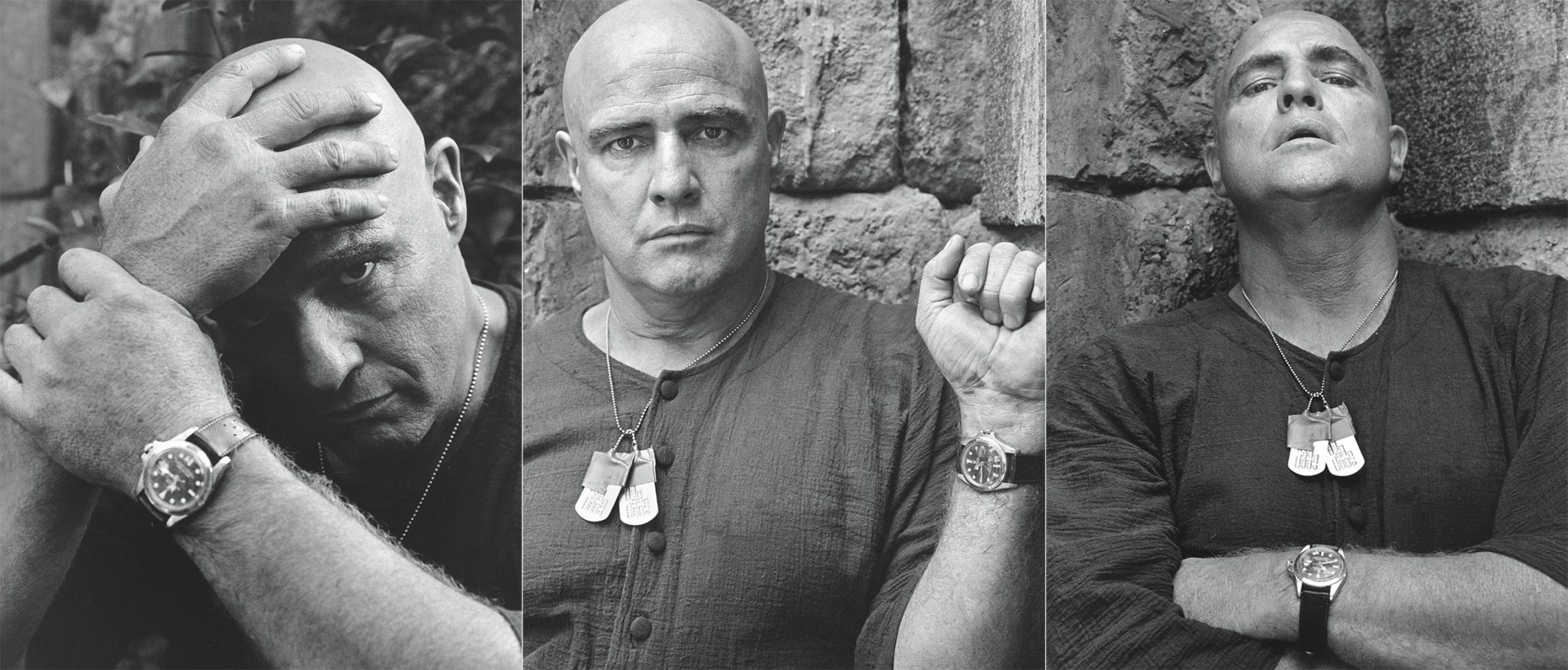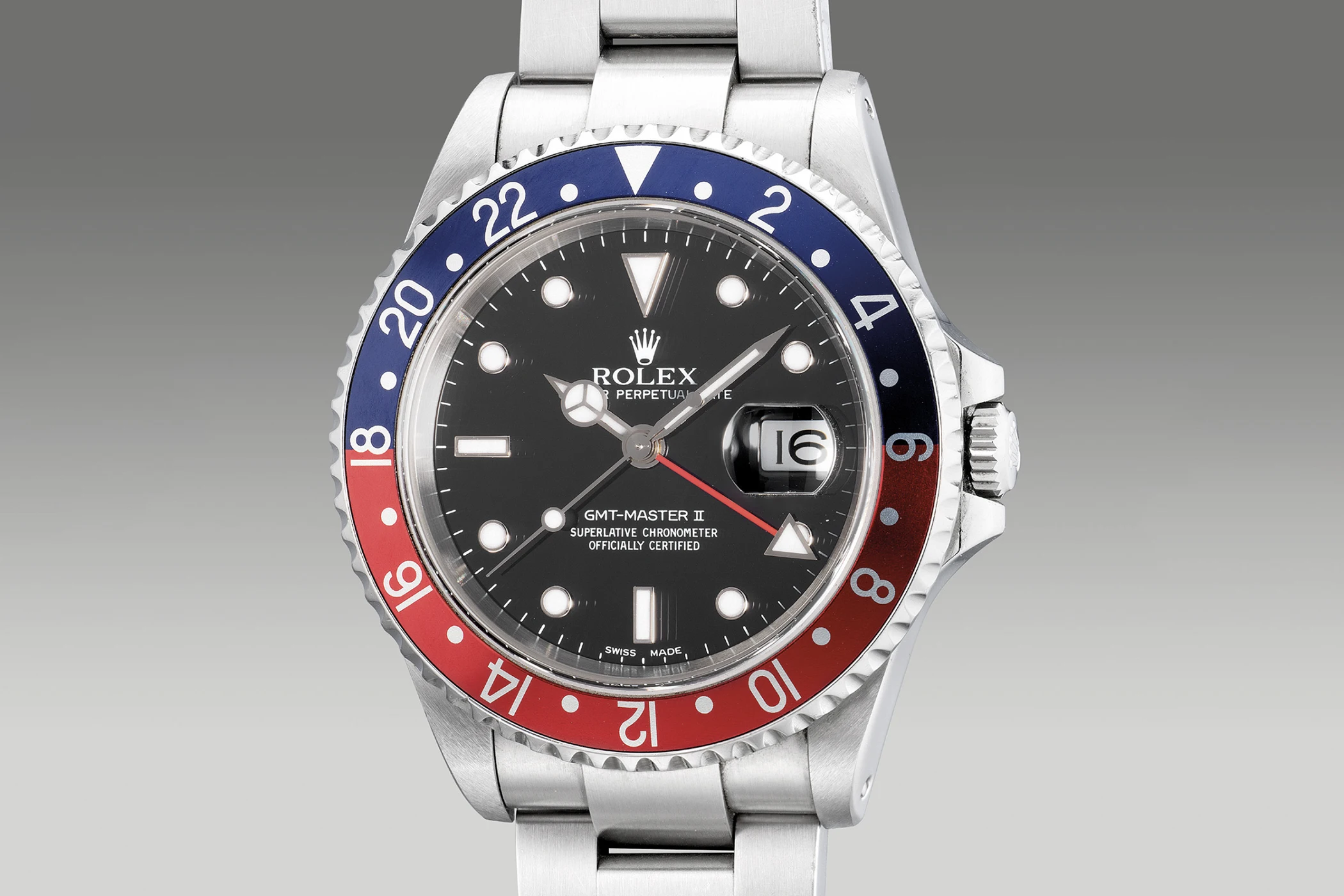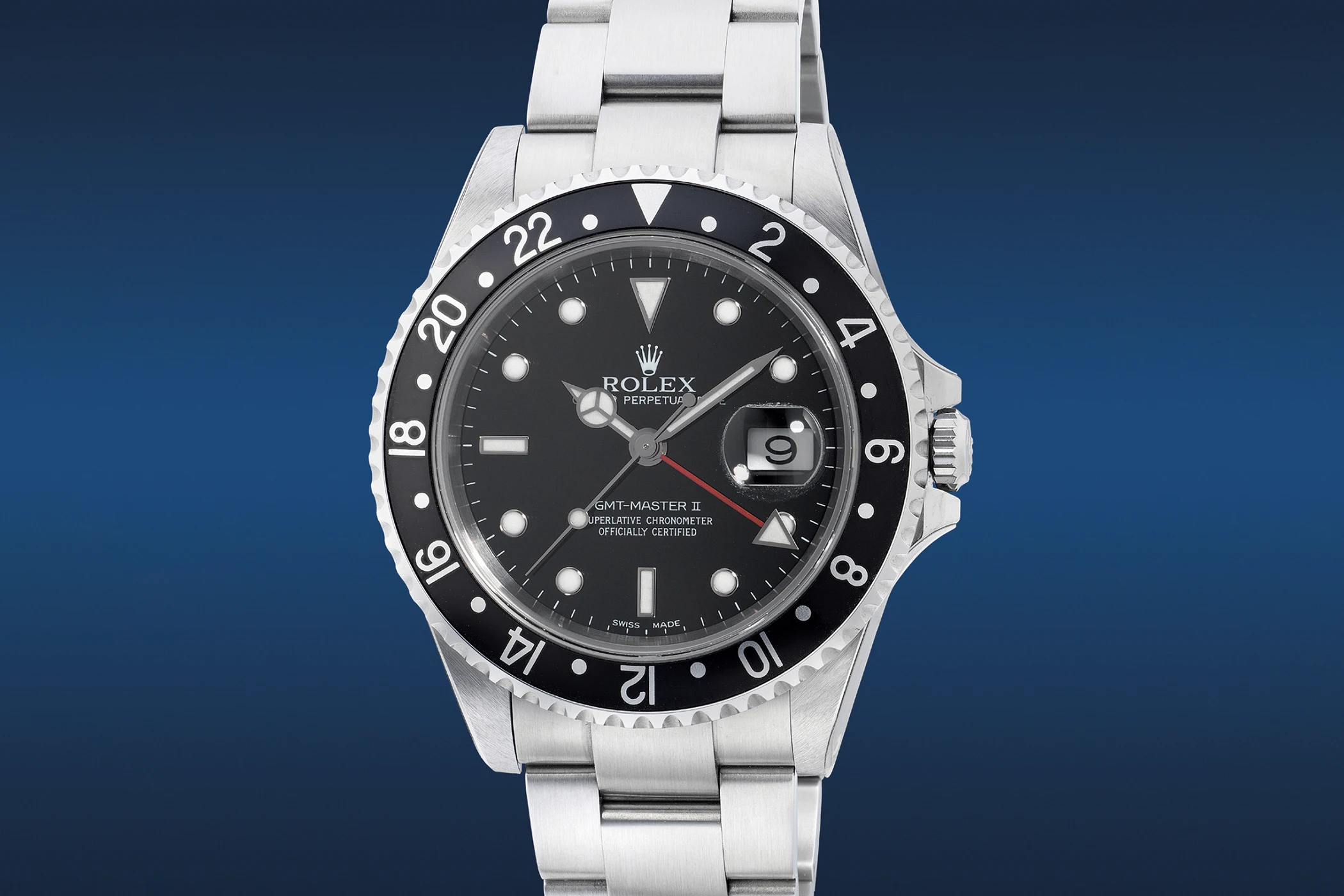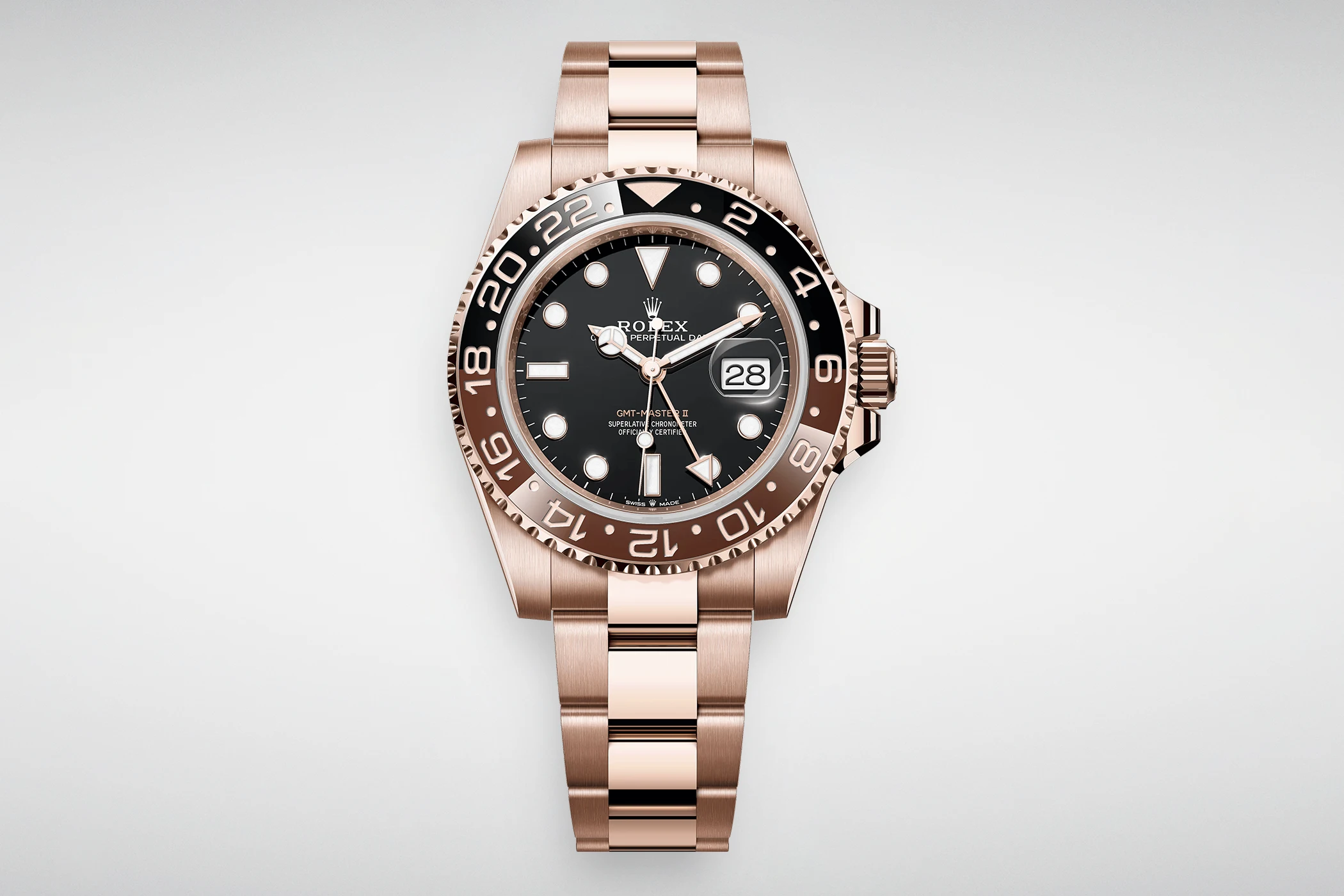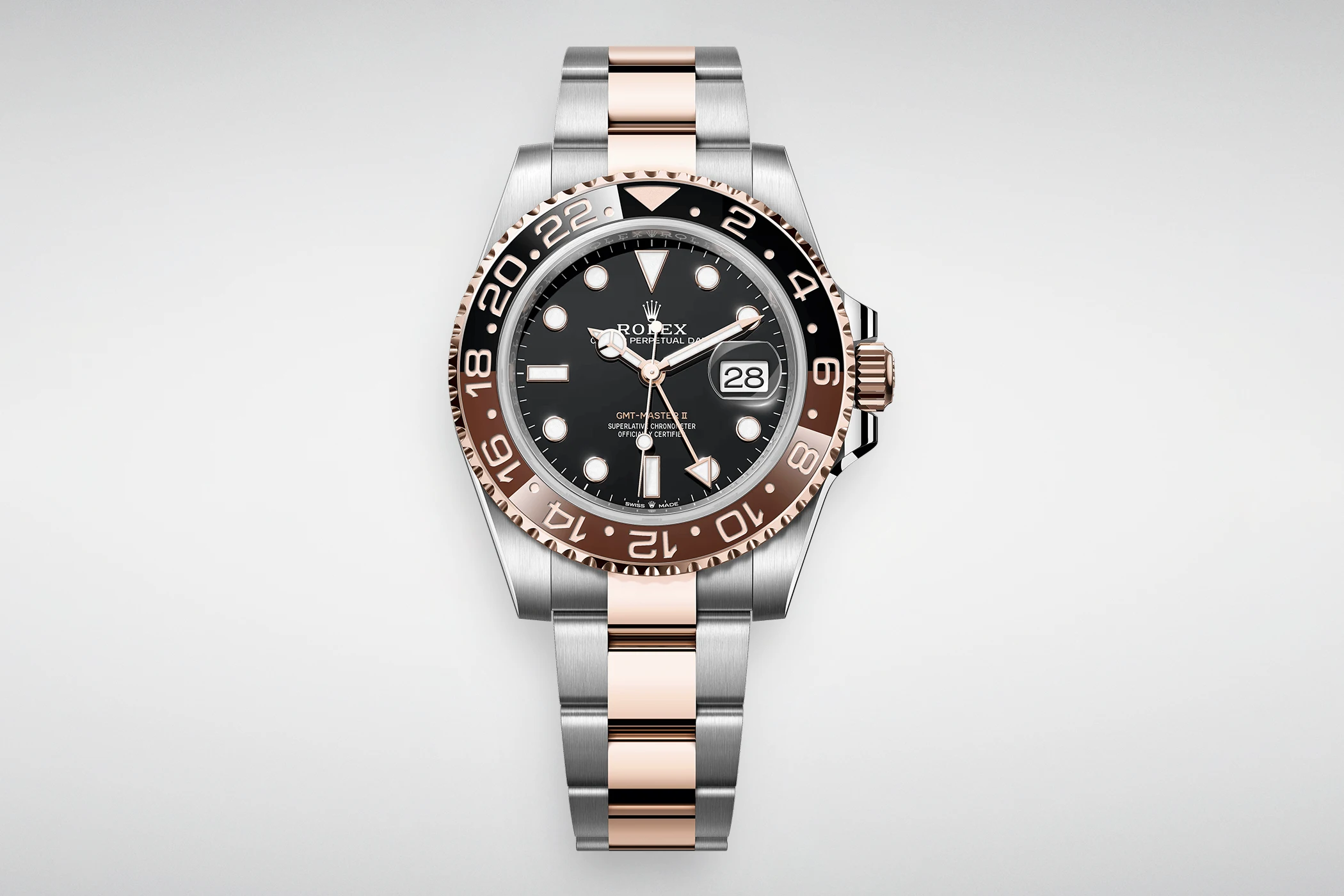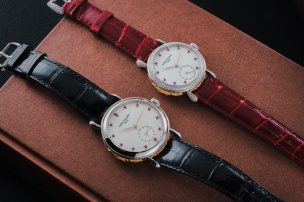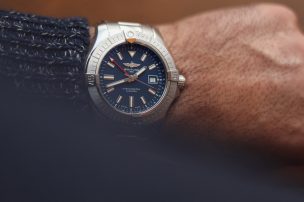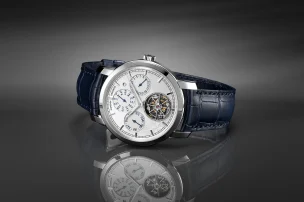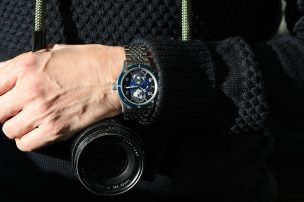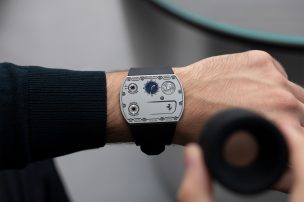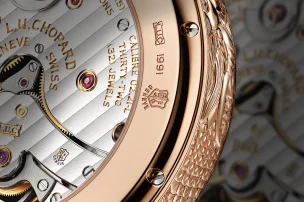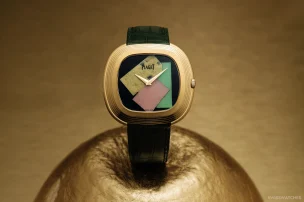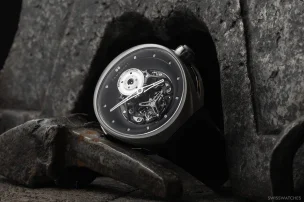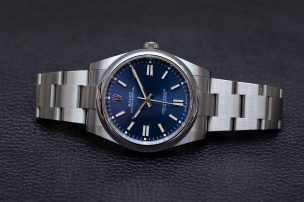
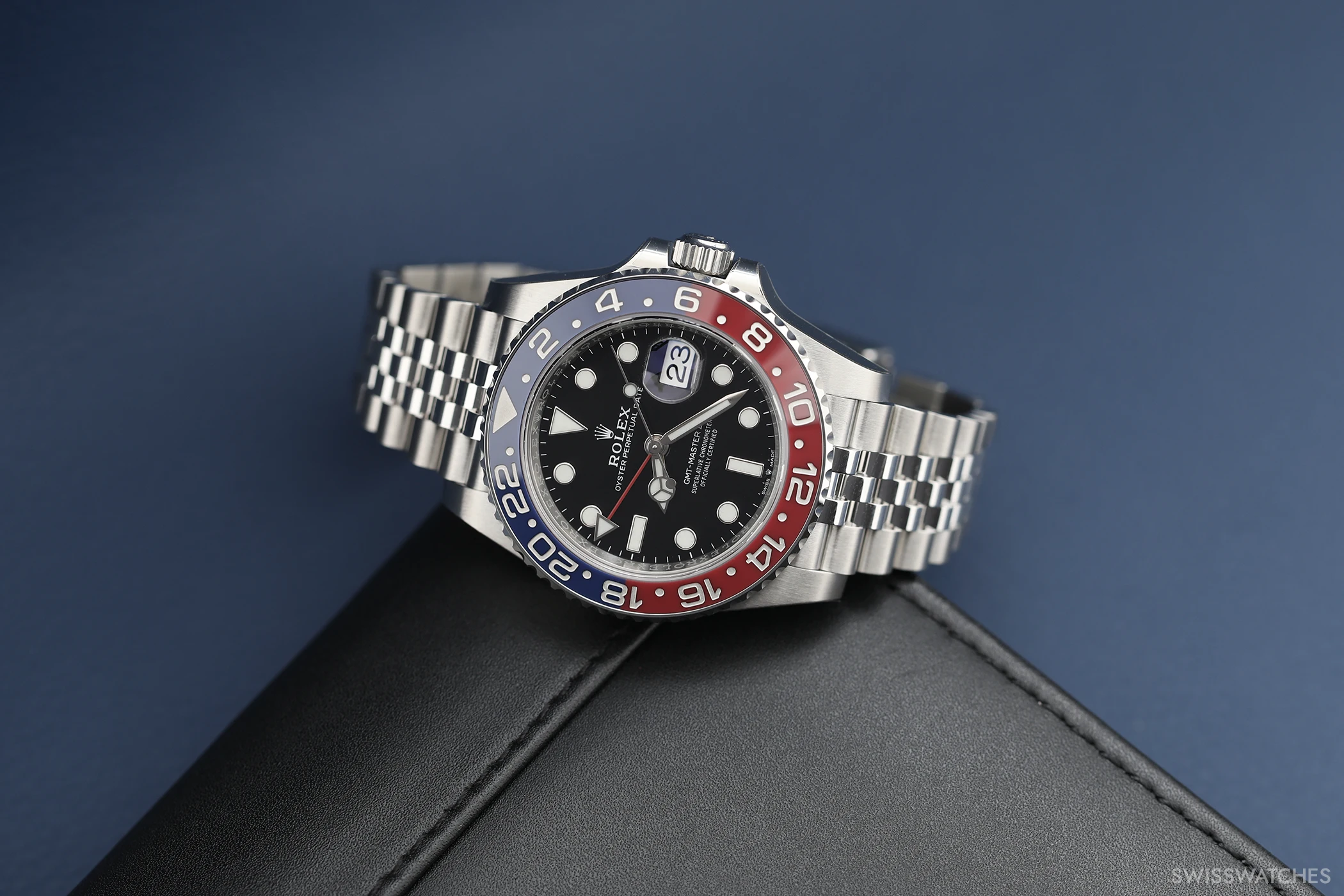
Everything You Need to Know About the Rolex GMT-Master
To mark the 70th anniversary of the Rolex GMT-Master, we turn our attention to a model line originally developed to meet the demands of intercontinental air travel—one that has long since become a staple among sporty stainless-steel wristwatches. In this article, we explore the technical evolution of the GMT-Master, explain how the time zone mechanism of the GMT-Master II functions, and trace the history of both the first and second generations through their most defining references. Our focus lies on those models that have shaped the character of the watch over decades and continue to drive its desirability today.
The History of the GMT-Master
The year is 1955: Pan American World Airways—better known as “Pan Am”—had, since 1939, established the first regular passenger and mail service between the USA and Europe with its “Flying Clippers”, most notably the Boeing 314. These flights, which crossed multiple time zones, made Pan Am a pioneer of international scheduled air travel—and this is precisely where the GMT-Master entered the picture. Developed in partnership with the legendary airline, the GMT-Master was launched in 1955 with the specific aim of enabling pilots to read both local time and home time at a glance while crossing time zones during transatlantic flights. This collaboration culminated in 1959, when the GMT-Master accompanied the first nonstop Pan Am flight from New York to Moscow—worn by pilot Clarence Warren and used as a navigational aid.
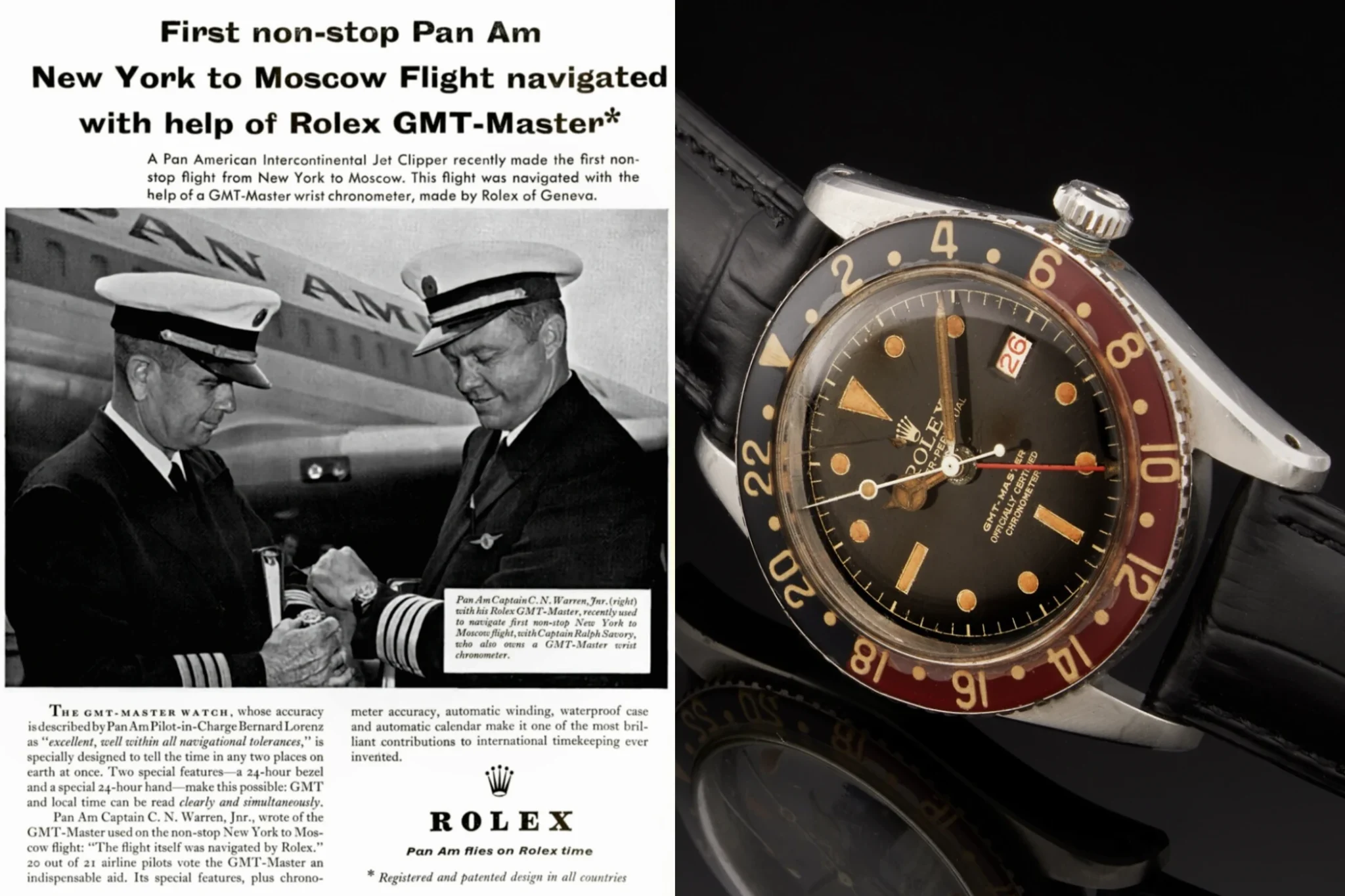
Credit © Sotheby’s
The Difference Between the GMT-Master and the GMT-Master II
The GMT-Master – The First Generation of GMT Watches
The GMT-Master emerged at a time when every Rolex innovation seemed to serve a specific purpose: the Submariner for divers, the Milgauss for scientists—and the GMT-Master? It reflected Rolex’s strategy of broadening its catalogue to cater to professional pilots. Yet the first generation of the GMT-Master had one significant drawback: the 12-hour hand, which displayed the local time, was mechanically linked to the 24-hour GMT hand. This meant that adjusting the GMT hand would also move the hour hand—and vice versa. As a result, changing time zones required resetting the entire time on the watch, rather than simply adjusting the local time independently.
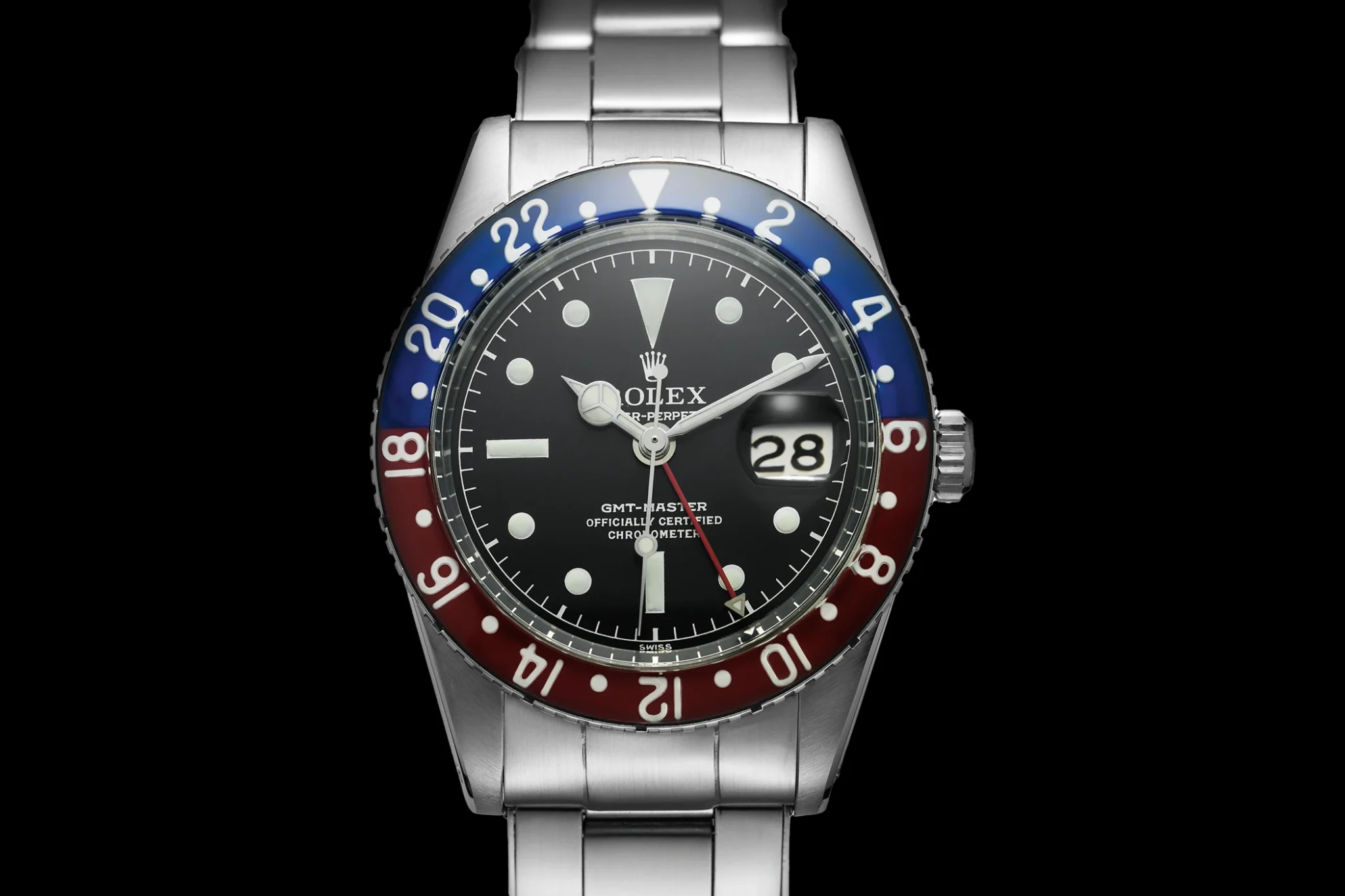
The GMT-Master II – The Second Generation of GMT Watches
To address this issue, Rolex introduced the GMT-Master II in 1982 as a “true” GMT watch. Thanks to an improved movement design, this new version allowed for a more refined and practical approach to setting the time. Unlike its predecessor, the traditional hour hand on second-generation GMT watches could now be adjusted independently of the GMT hand—without stopping the watch or resetting the entire time display.
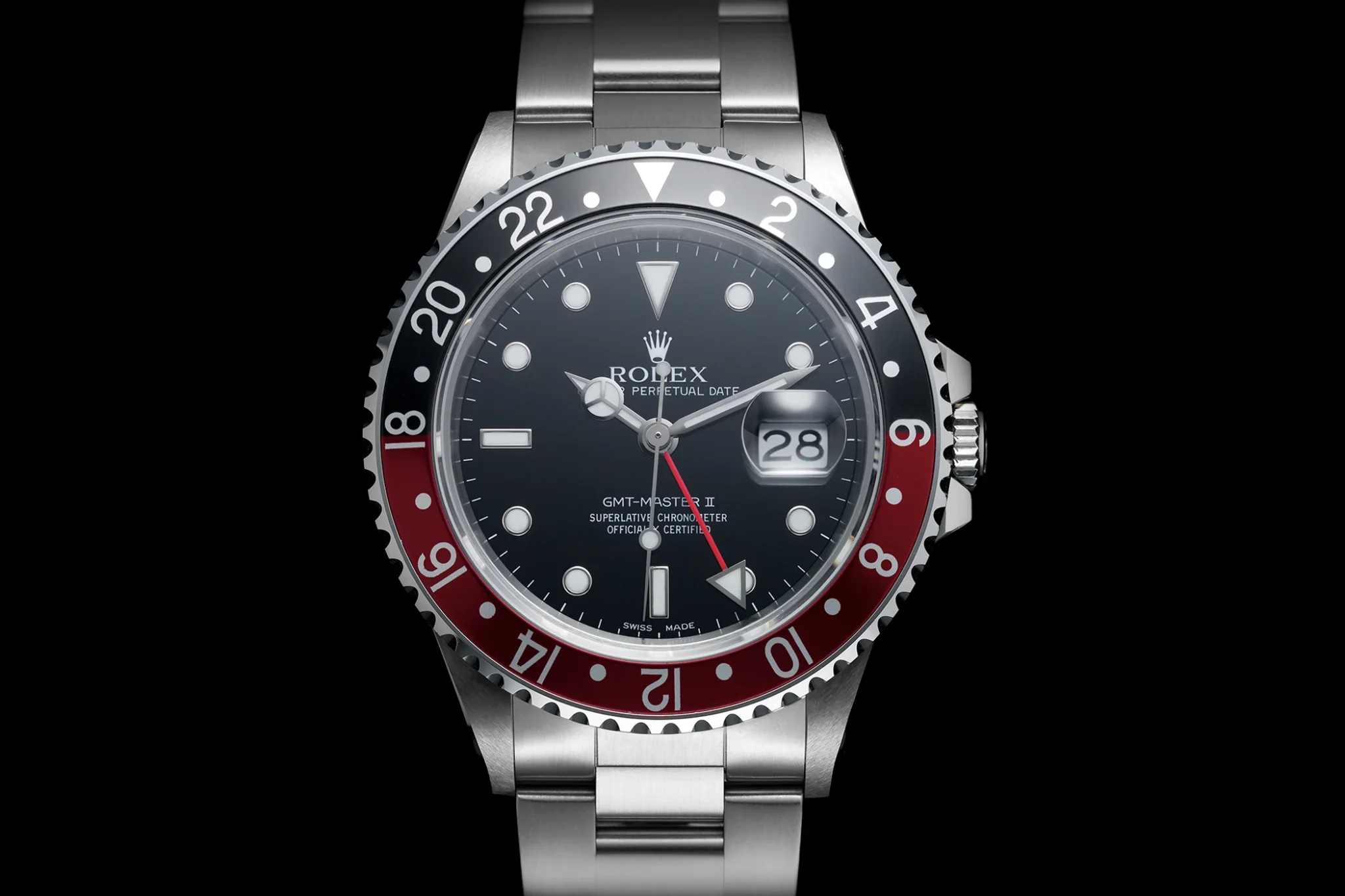
The 24-Hour Hand
The purpose of the GMT-Master II is to display Greenwich Mean Time (or UTC) in addition to the local time. Local time is indicated by the traditional hour and minute hands. To read the time in a second—or even a third—time zone, one simply refers to the longer, often differently coloured 24-hour or GMT hand. This hand earns its name from the fact that, unlike the regular hour hand, it completes one full rotation of the dial every 24 hours—meaning it moves at half the speed. This slower rotation allows the GMT hand to be aligned with the 24-hour scale on either the bezel or the inner minute track, thereby enabling the reading of a second or third time zone.
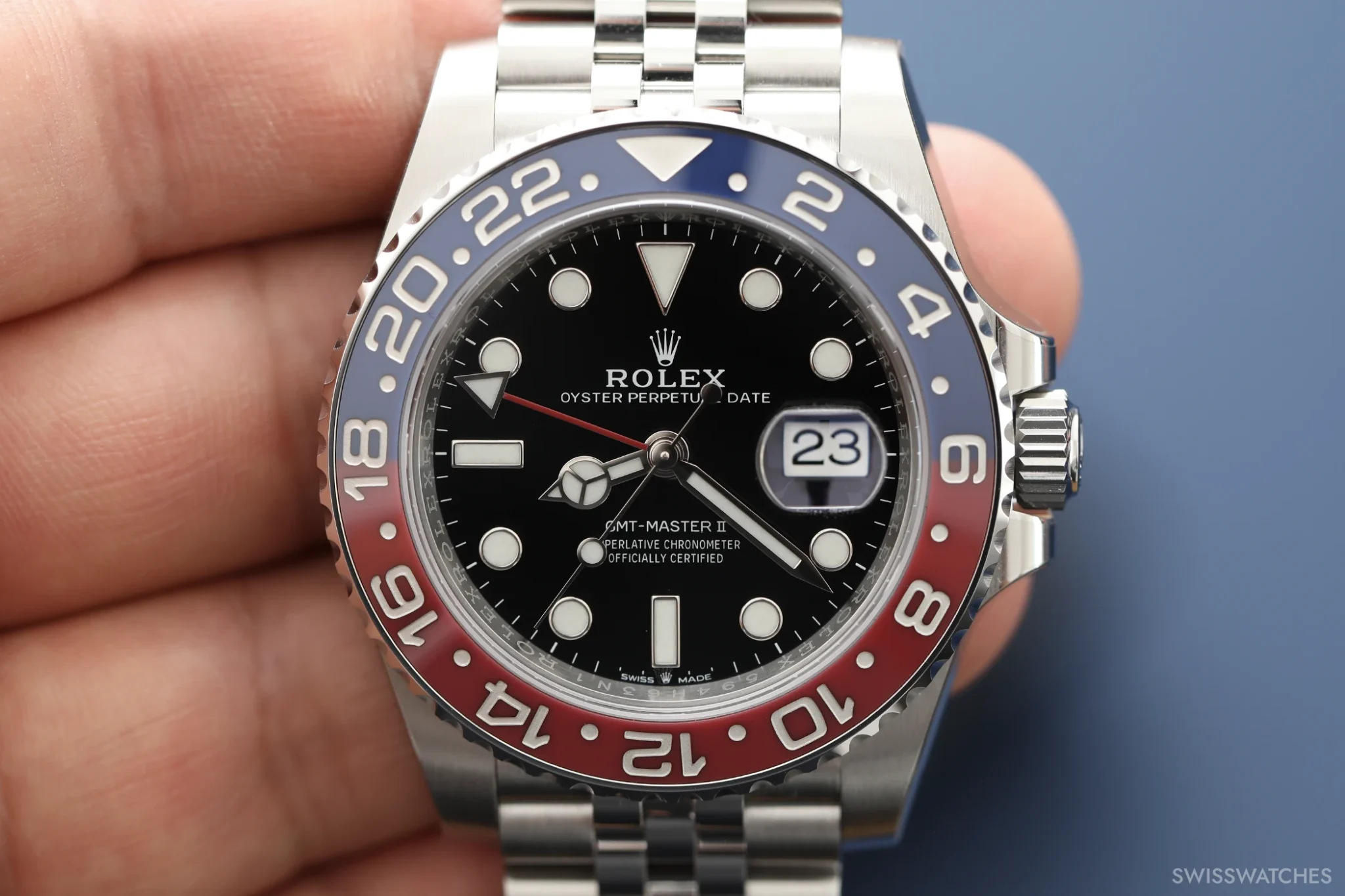
The Bezel
This leads us to another essential element of the GMT concept: the bezel. The 24-hour scale on the bezel allows the user to distinguish between day and night hours, and to set a second or third time zone. To enhance legibility between day and night, many GMT-Master II bezels feature a two-tone colour scheme and are bidirectional for ease of adjustment.
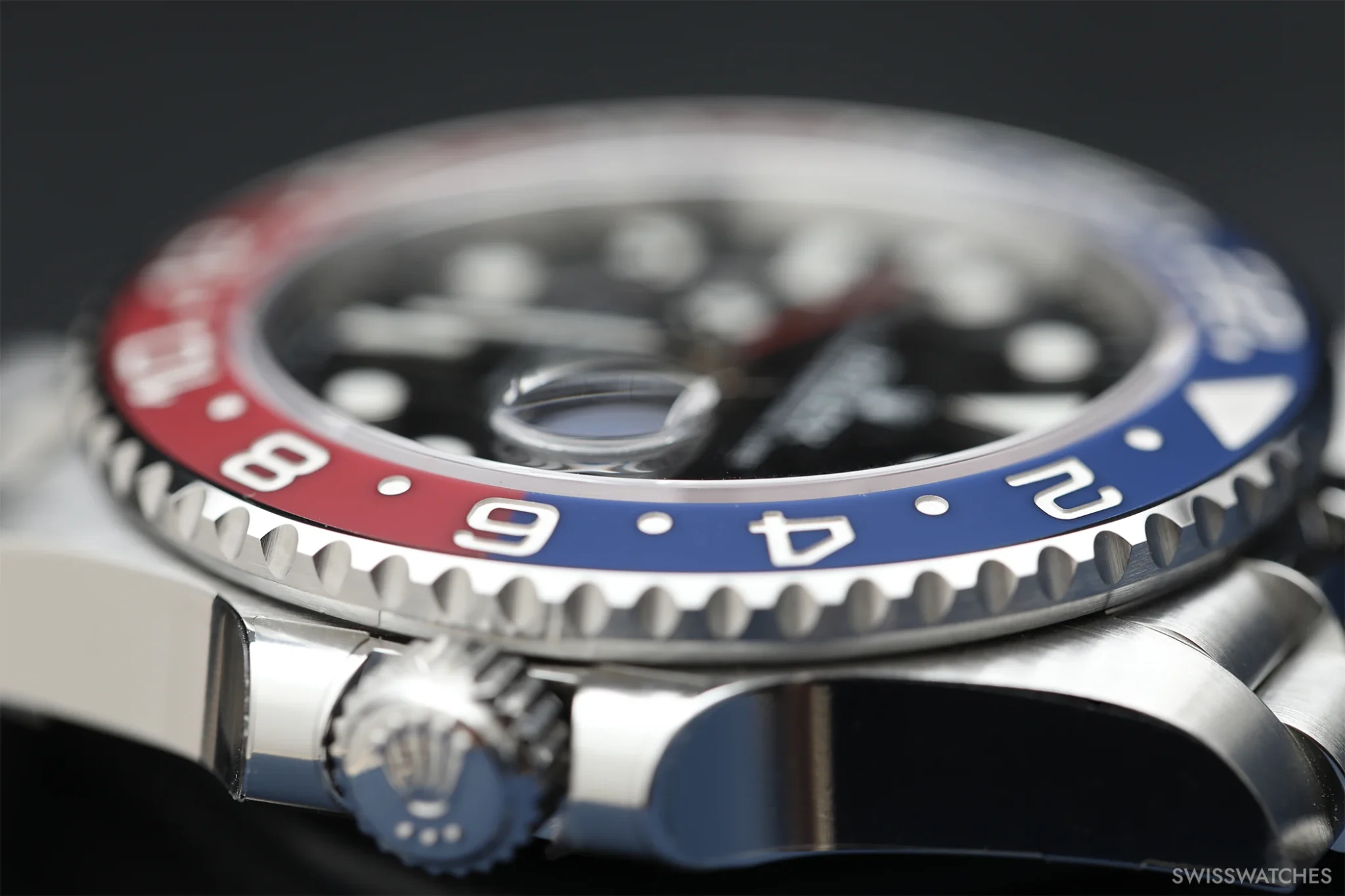
Explaining the GMT-Master II Function with an Example
To illustrate the GMT-Master II’s operation more clearly, consider the following scenario: Before flying from his home city of Berlin to New York, the wearer must rotate the bezel so that the triangle marker aligns with the 12 o’clock index on the dial. Next, the crown is unscrewed and pulled out to the second position (you’ll notice the seconds hand stops), allowing the user to set both the GMT hand and the standard hour hand to the home time. As long as the wearer remains at their reference location—in this case, Berlin—the local time (indicated by the 12-hour hand) and the reference time (24-hour hand) are the same.
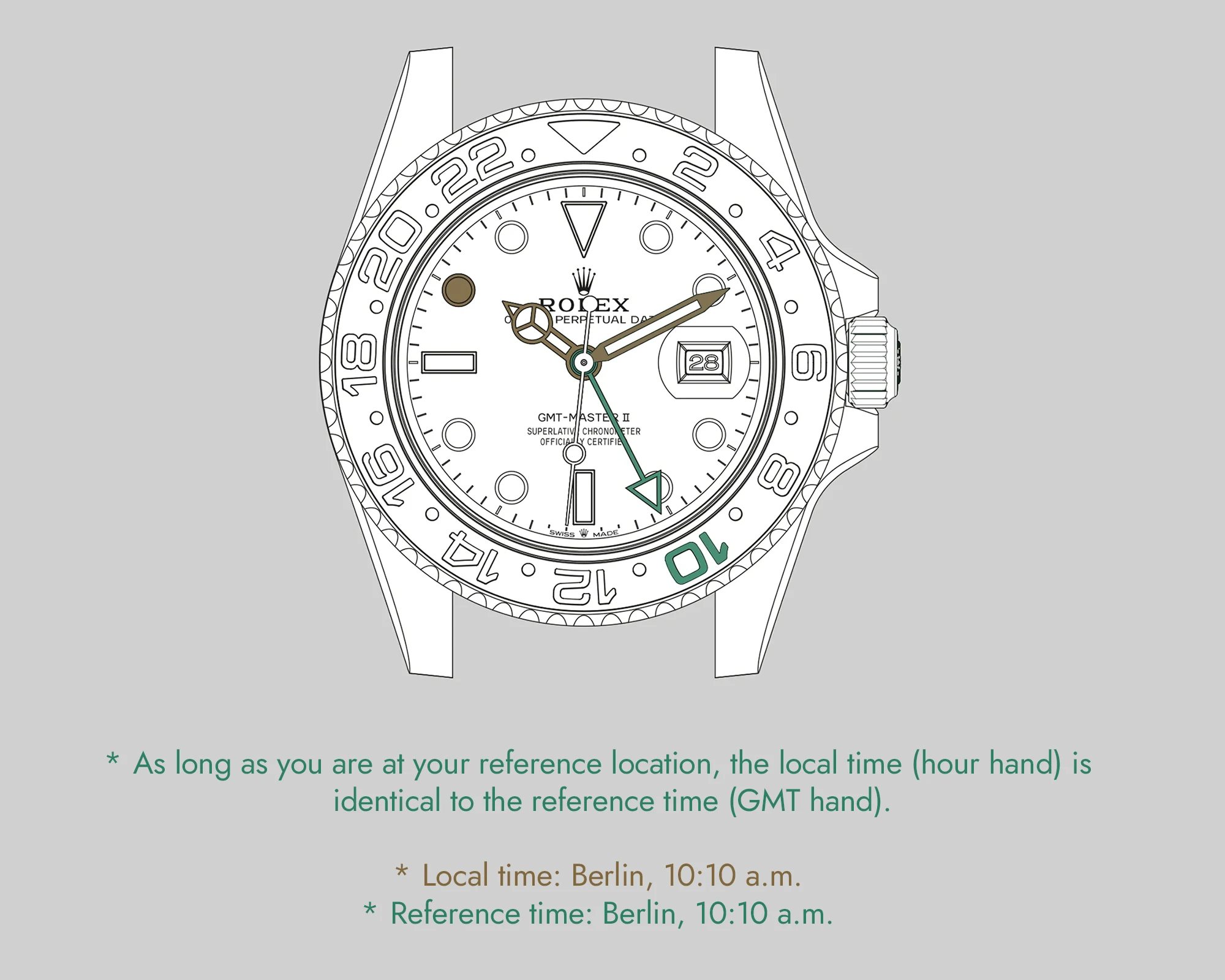
It is important to note that adjusting the reference time causes the local hour hand to move as well. Since only the local hour hand can be moved independently, it is crucial to set the reference time first, followed by the local time.
Reading Two Time Zones
Once the wearer has arrived in New York, they adjust the traditional hour hand to the local New York time of 04:10. This is done by pulling the crown out to the first position. The 24-hour hand, unaffected by this adjustment, continues to display the reference time in Berlin—10:10. This way, two time zones can be read simultaneously.
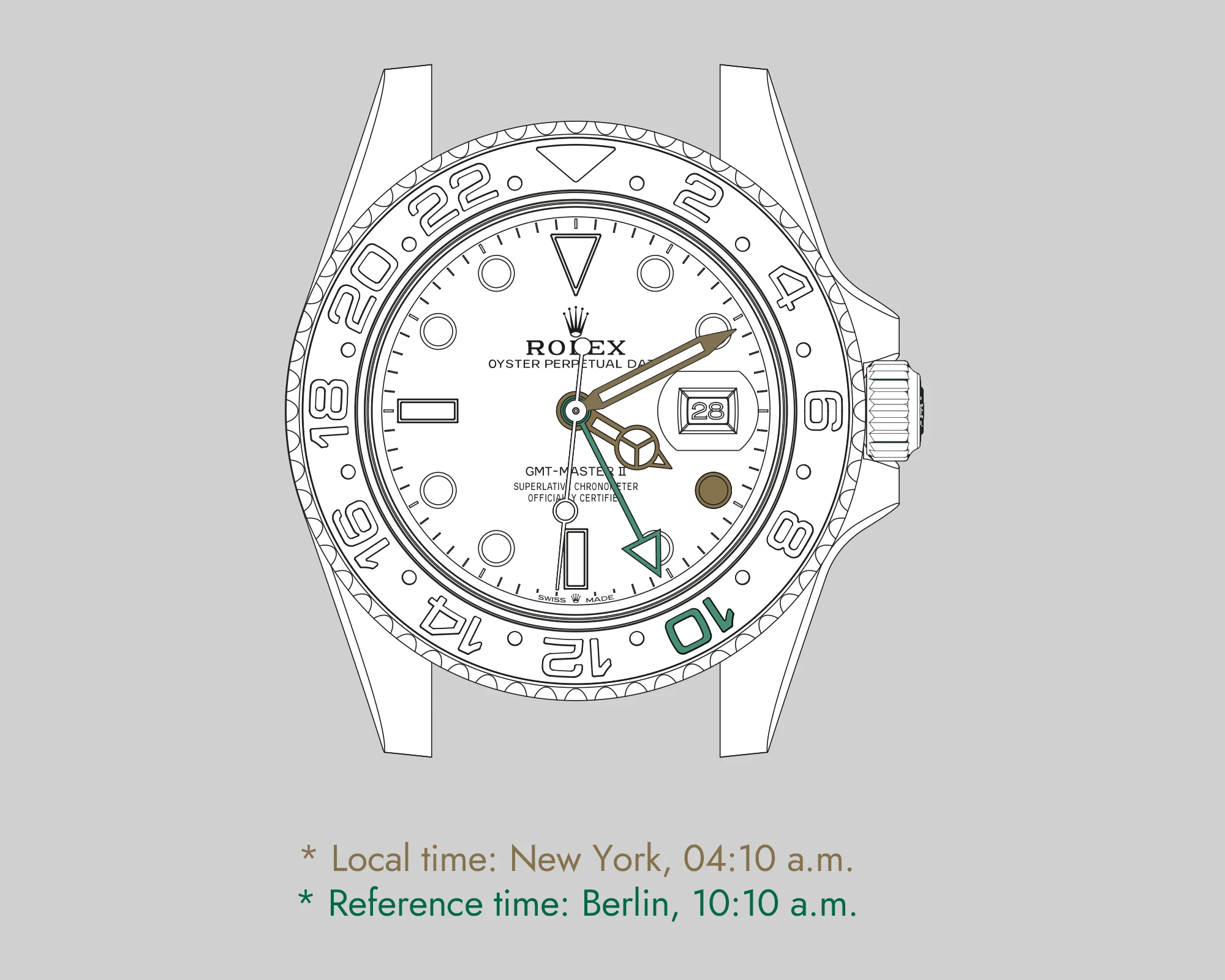
Reading Three Time Zones
If the wearer now wishes to read the time in a third time zone—for instance, Tokyo, where it is currently 18:10—they must rotate the bezel so that the “18” aligns with the GMT hand. For the second time zone (Berlin), the bezel is no longer used; instead, the inner minute track is referenced—marked with 60 fine minute markers surrounding the hour indices. However, as this scale only covers 12 hours (because the regular hour hand completes a rotation every 12 hours), the wearer must simply double the value indicated to read the correct home time.
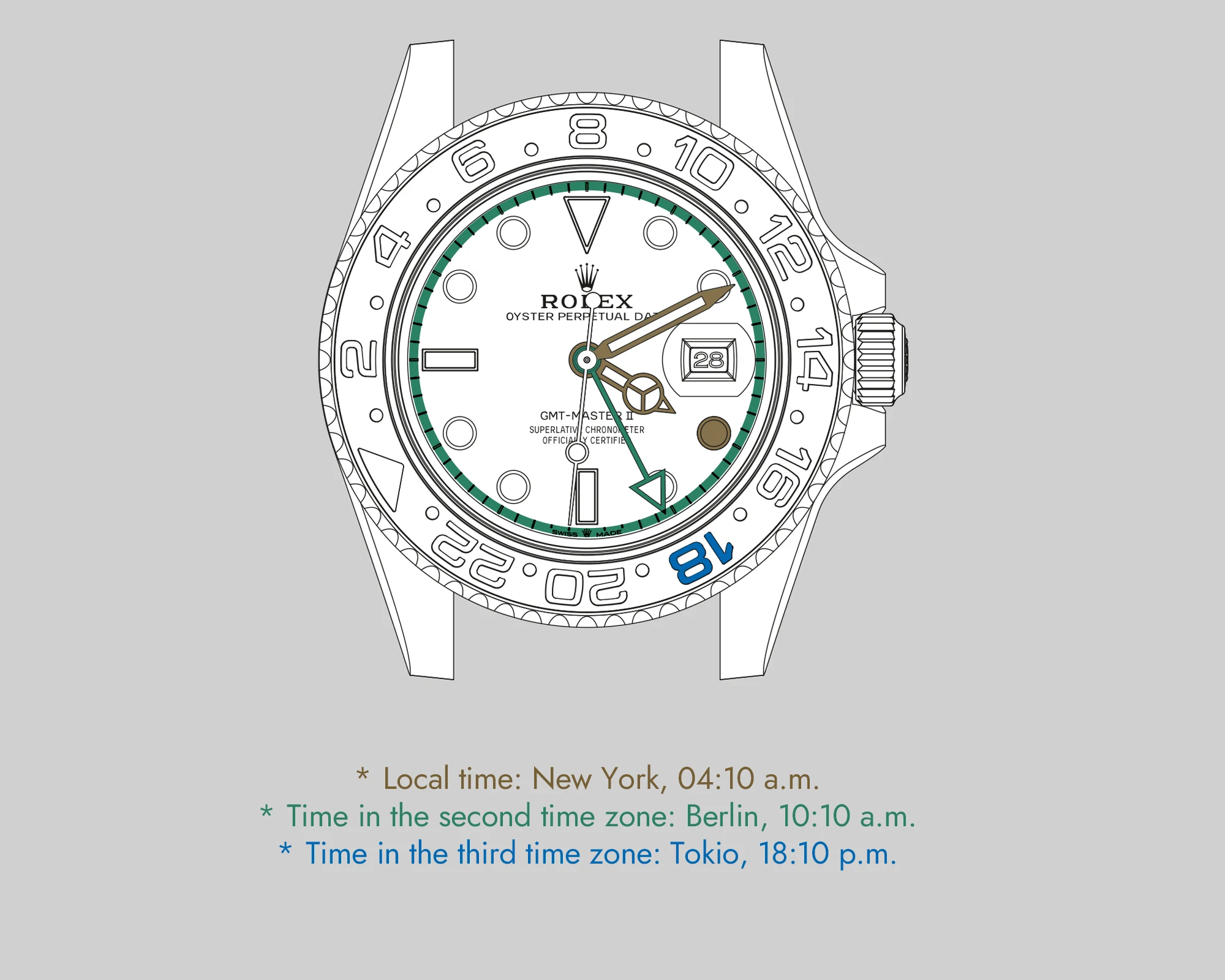
The First GMT-Master: Ref. 6542 (1955–1959)
To tell the story of the Rolex GMT-Master, one must interestingly begin with an entirely different model: the Ref. 6202, launched in 1953 and known as the Turn-O-Graph. Positioned somewhere between an Oyster Perpetual and a Submariner, this watch introduced two design elements that would prove foundational for the later GMT-Master: a bidirectional rotating bezel and a luminous dial. Its design laid the groundwork for the first true GMT-Master, Ref. 6542. Debate continues over the exact release year—1954 or 1955—but Rolex itself states 1955, which we will follow here.
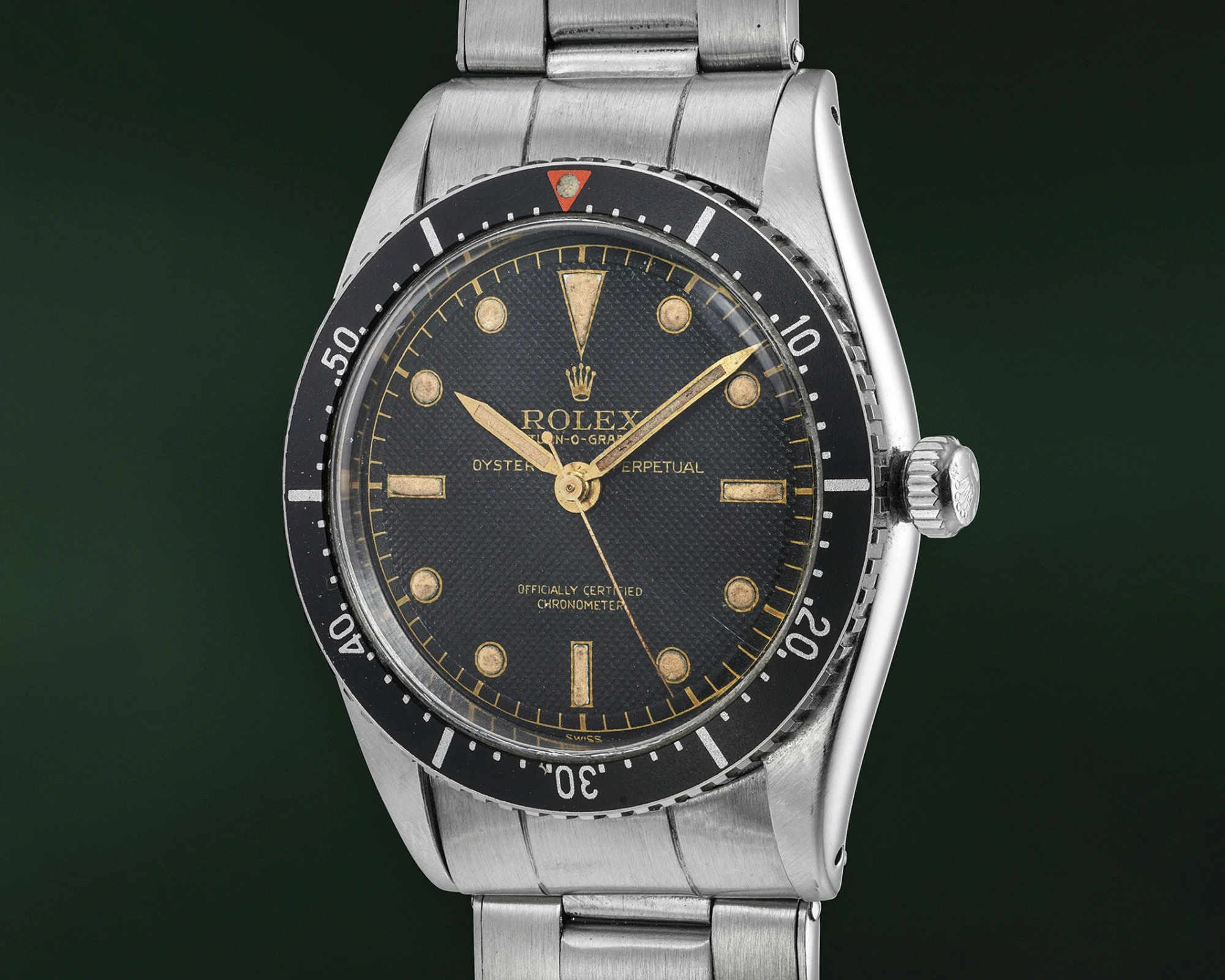
Credit © Phillips
The inaugural GMT-Master Ref. 6542 combined the case of the Turn-O-Graph with a Bakelite bezel—a type of plastic used to create the luminous, two-tone “Pepsi” bezel. While visually striking, the material proved prone to cracking. Unlike the Turn-O-Graph’s 60-minute scale, the GMT-Master’s rotating bezel featured a 24-hour scale—reinterpreted for the purpose of tracking a second time zone.
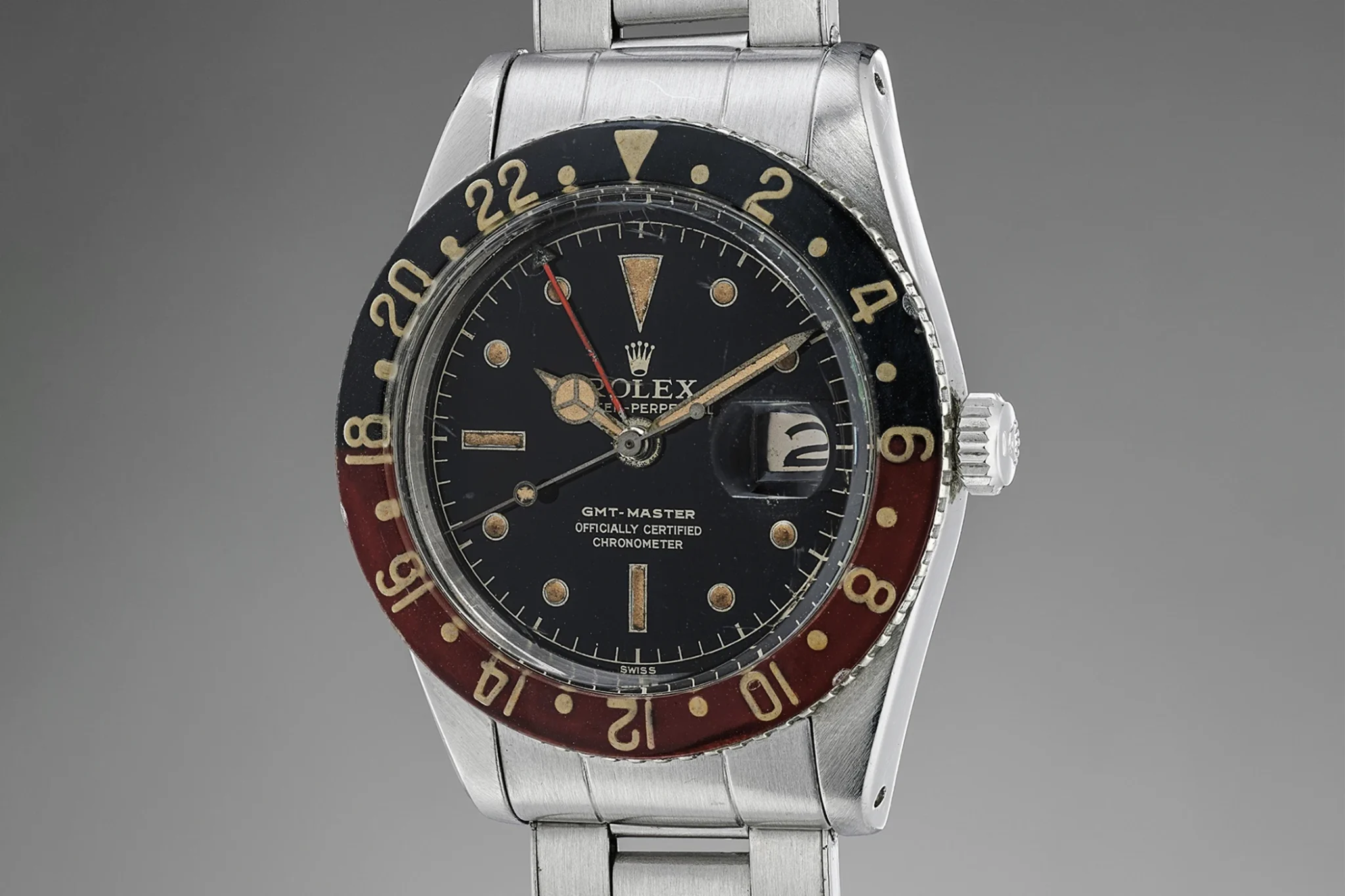
Credit © Phillips
The first GMT-Master appeared in several variants, including the Ref. 6542/8: a solid 18-carat gold model featuring the so-called “nipple dial”. This unusual name refers to the applied hour markers, which, due to their gold surrounds, resemble raised dots. The watch was also fitted with a “root beer” bezel and sword-shaped hands. By around 1956/1957, Rolex quietly replaced the fragile Bakelite bezel inserts with aluminium, without changing the reference number.
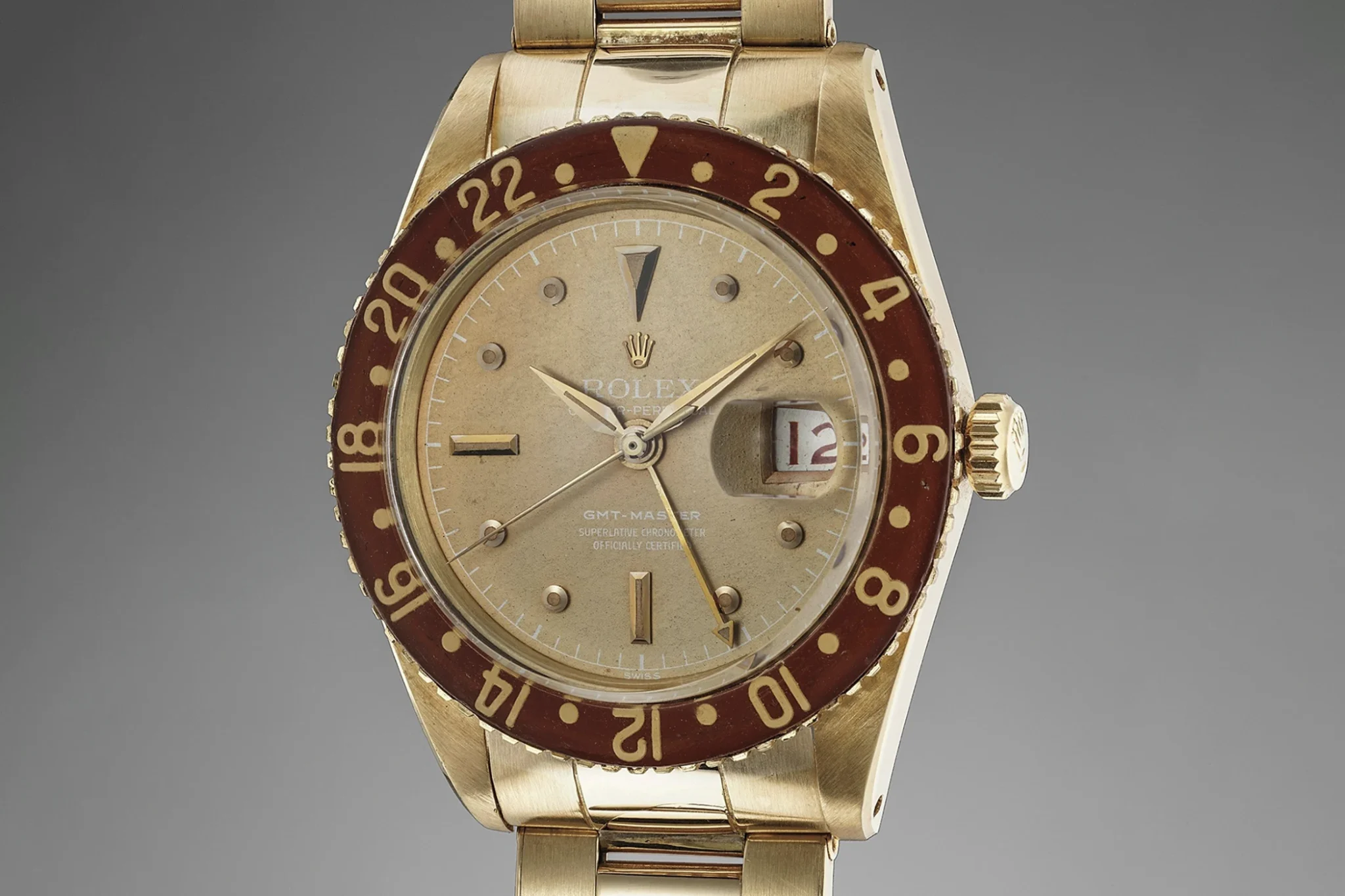
Credit © Phillips
GMT-Master Ref. 1675 (1959–1980)
The GMT-Master Ref. 1675 remained in production for over two decades—an impressive span from 1959 to 1980. Upon its launch, the case was enlarged to 40 mm, fitted with crown guards, and the bezel was given deeper notches to improve grip. Inside the case, the new Calibre 1565 featured a Breguet overcoil, delivering approximately 44 hours of power reserve at a frequency of 18,000 vibrations per hour. Technically speaking, this calibre marked a significant improvement and would serve as the base for most GMT movements well into the 1980s. This movement upgrade around 1960 also led to a dial revision: the previous “OCC” (Officially Certified Chronometer) text was replaced by “SUPERLATIVE CHRONOMETER OFFICIALLY CERTIFIED”—a label still found on Rolex dials today.
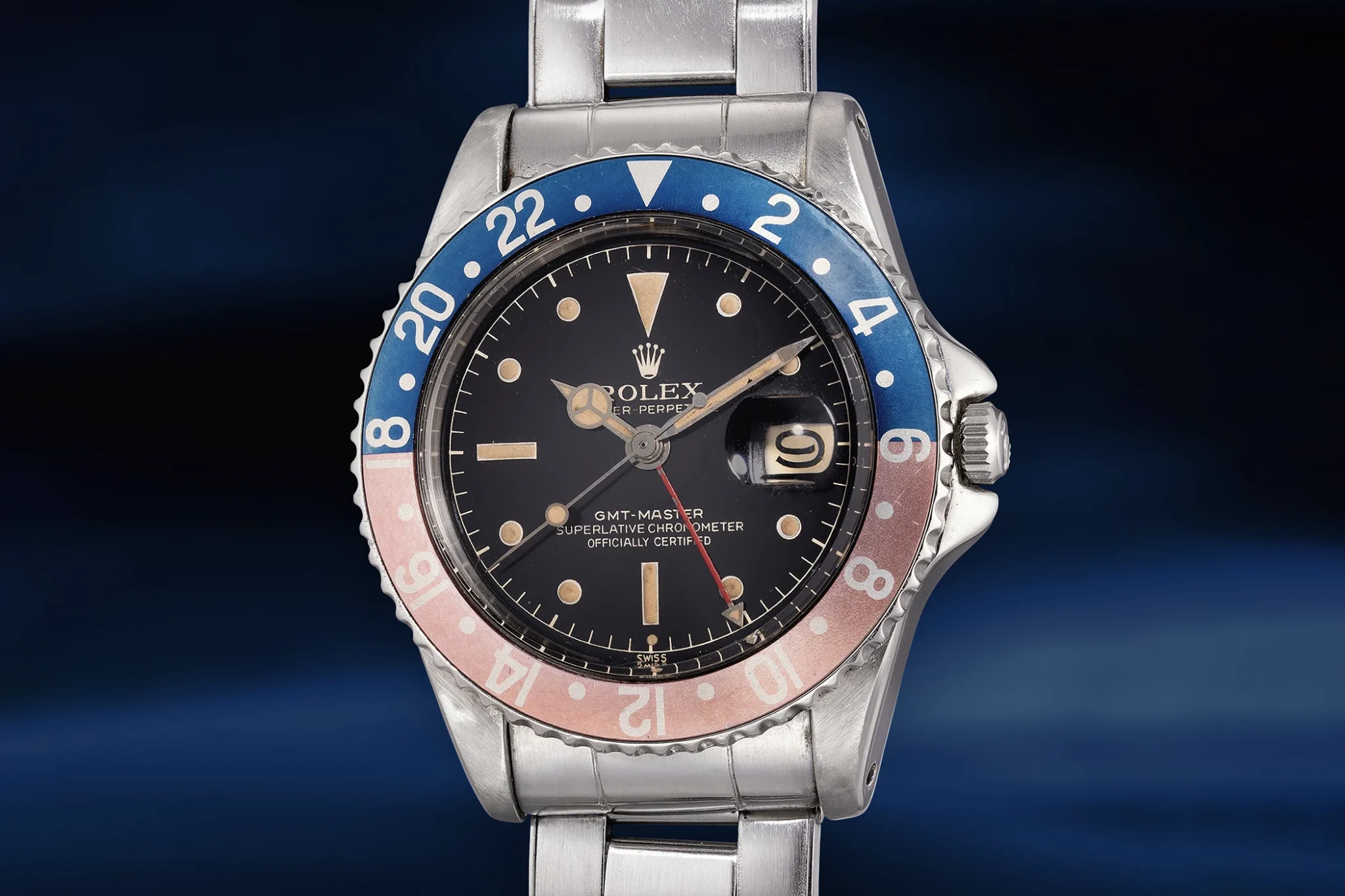
Credit © Phillips
From the late 1950s through the 1980s, the Ref. 1675 saw numerous iterations with subtle but noteworthy changes, primarily relating to dial text and layout. One version, produced around 1962/63, appears nearly identical to earlier 1675s, save for a small luminous dot below the 6 o’clock index—referred to as the “exclamation mark” dial. This detail is widely believed to indicate a reduction in the radioactivity of the luminous material, potentially marking an early use of tritium or a transitional blend of tritium and radium. By around 1964, the “T” designation had become standard to signal tritium use.
In 1963, Rolex made its most comprehensive dial update yet: the closed minute track—also called a “chapter ring”—was replaced by longer minute and seconds markers extending to the dial’s edge. Other changes included the emergence of “underline” and “double Swiss” dials, featuring details like a double “SWISS” inscription at 6 o’clock or a thin line beneath the “Superlative Chronometer Officially Certified” text. Around 1964, the dial was again revised, now reading “SWISS – T < 25” to formally indicate the use of tritium.
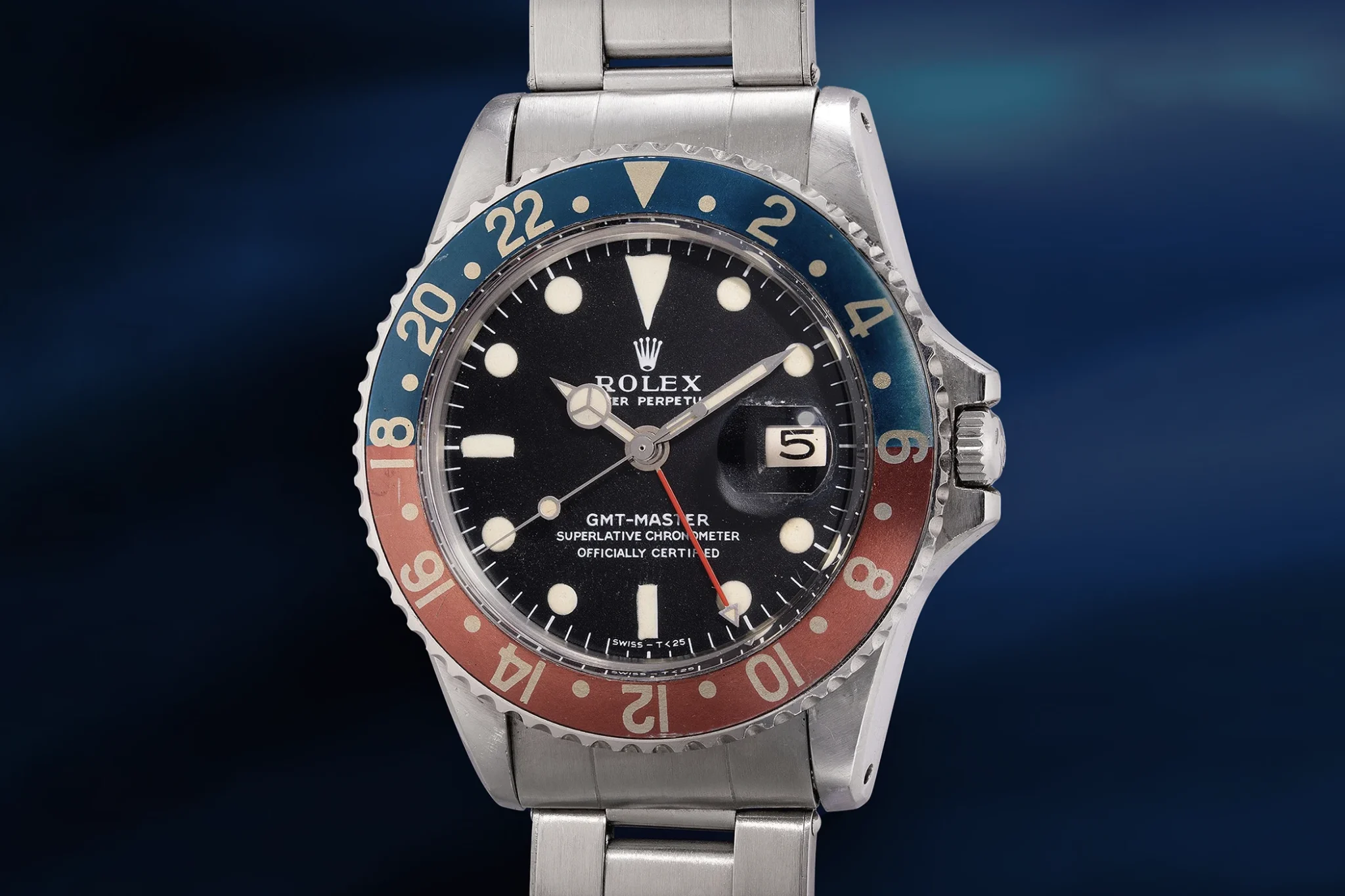
Credit © Phillips
By 1965, Rolex upgraded the movement once more—this time to Calibre 1575. This new calibre increased the power reserve to approximately 48 hours and raised the frequency to 19,600 vibrations per hour. It also added a date mechanism, automatic winding, and from around 1971, a hacking (stop-seconds) function. In 1966, the first matte dials were introduced in the 1675 line, gradually replacing the glossy versions. These matte dials would characterise production for nearly 14 years and can even be found in the earliest examples of the Ref. 16750, the model that would eventually succeed the 1675.
GMT-Master Ref. 16750 (1980–1988)
Following the legacy of the Ref. 1675 came the GMT-Master Ref. 16750. This model introduced the new Calibre 3075, which offered a hacking seconds function, a quickset date feature, and an increased frequency of 28,800 vibrations per hour. The movement’s architecture also brought a visual change: the 24-hour hand was now positioned above the hour hand, rather than beneath it. In addition, the Ref. 16750 saw a doubling of water resistance from 50 metres to 100 metres.
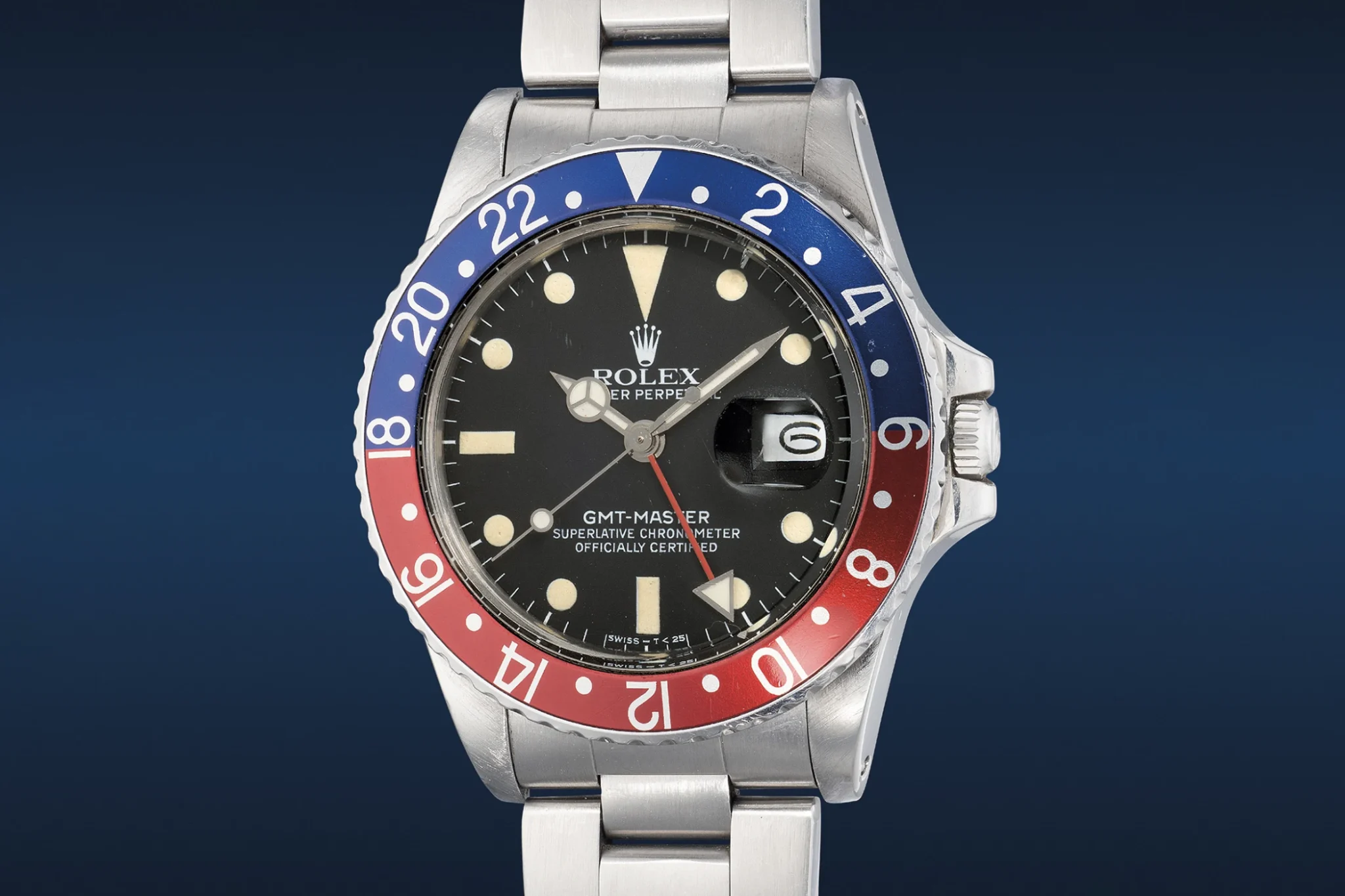
Credit © Phillips
As mentioned earlier, the earliest examples of the Ref. 16750 were still fitted with matte dials similar to those of the Ref. 1675. Later, Rolex replaced these with glossy lacquered dials featuring applied white gold hour markers. However, these new dials had a flaw of their own: they were prone to developing fine cracks over time, earning them the nickname “Spider Dials”. While these hairline fractures did not affect the functionality of the watch, they gave the dial a distinctive appearance.
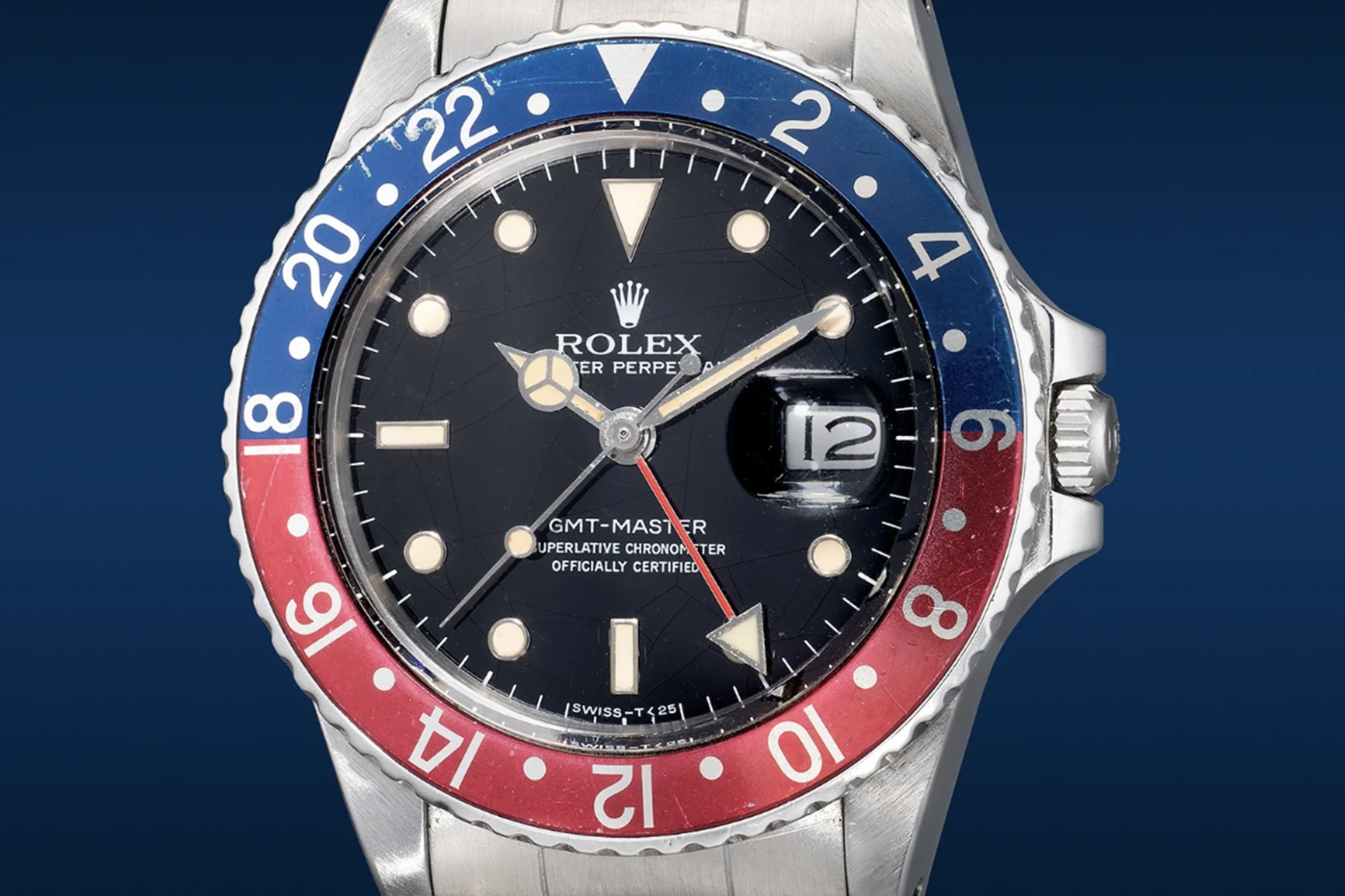
Credit © Phillips
The Ref. 16750 was one of the last two GMT-Master references produced alongside the GMT-Master II, which made its debut in 1982—but more on that shortly.
GMT-Master Ref. 16700 (1988–1999)
The Ref. 16700 marked the final new model in the GMT-Master lineage and heralded the beginning of the end for the first generation of GMT-Master watches. Interestingly, it was launched after the GMT-Master II had already entered the market. This move was widely seen as a strategic decision by Rolex to offer a more affordable alternative to the GMT-Master II. The final calibre used in the GMT-Master was the 3175, although it retained the same fundamental functionality as its predecessors. One notable change introduced with this reference was the replacement of tritium with Super-LumiNova as the luminous material toward the end of its production run in 1997.

Credit © Phillips
Despite all the variations and developments, the GMT-Master remained a precursor to a comprehensive reimagining of the GMT concept—one that would fully take shape with the GMT-Master II. Up next: the key references that define the GMT-Master II.
The First GMT-Master II: Ref. 16760 (1982–1988)
The first GMT-Master II introduced several innovations compared to the original GMT-Master, most notably a newly developed movement and an updated bezel. While the bezel remained the model’s most iconic design element, its bicolour scheme now played a greater functional role—enhancing legibility between day and night. This redesign made the Ref. 16760 particularly distinctive, as it was the first GMT-Master II to feature a black-and-red bezel—black symbolising night, red representing day. The colour combination would go on to become known as the “Coke” bezel, marking a clear aesthetic shift from the earlier “Pepsi” design.
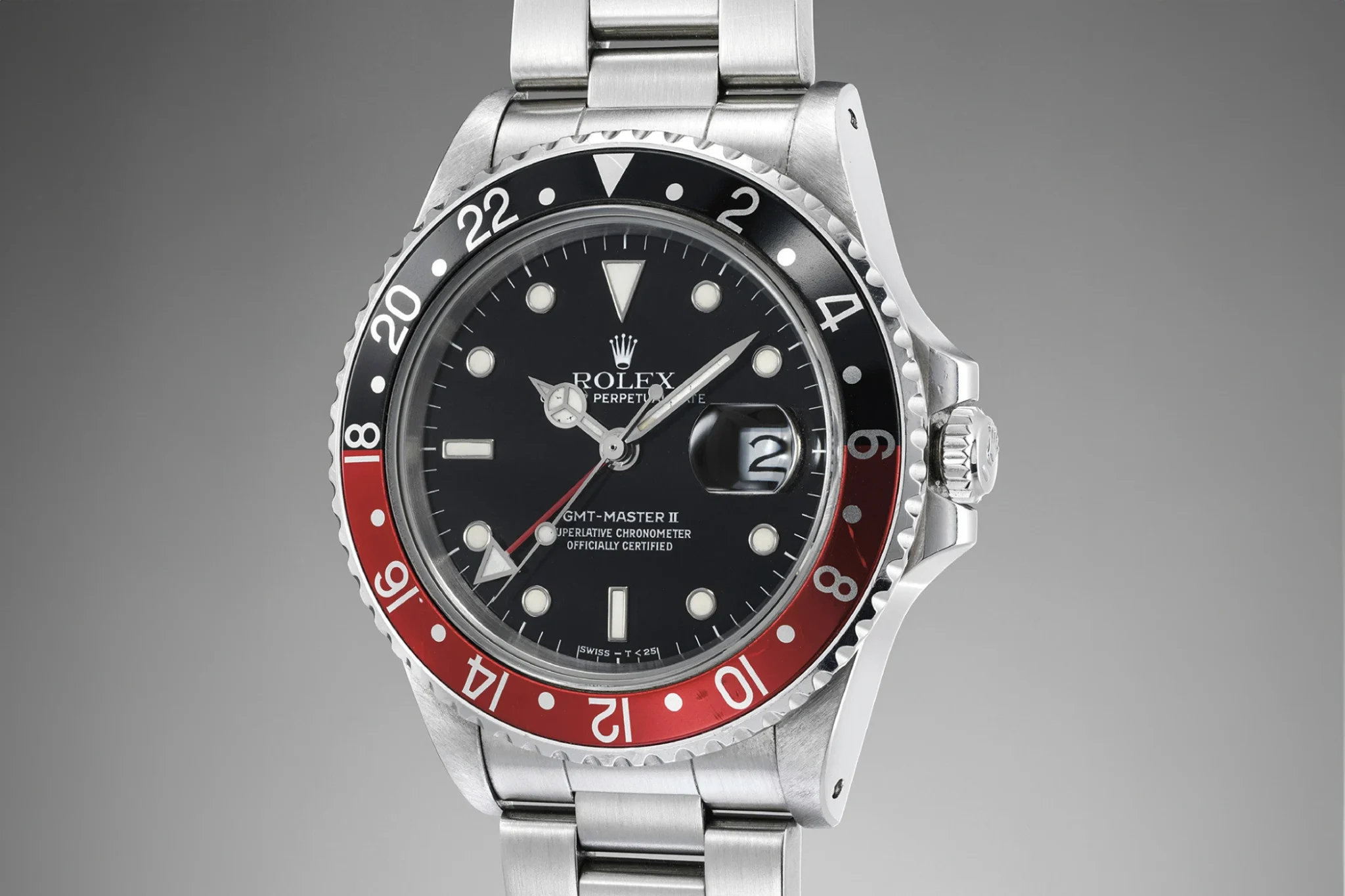
Credit © Phillips
Due to the considerable case thickness required to house the new Calibre 3085, this model earned the nickname “Fat Lady”. Another affectionate moniker, “Sophia Loren”, playfully referenced the Italian actress and her curves—reflected in the watch’s enlarged crown guards and broader profile. The new movement allowed the 12-hour hand to be adjusted independently in one-hour increments, without affecting the 24-hour hand or stopping the movement—an important leap forward in GMT functionality. Additionally, the case offered water resistance up to 100 metres and, for the first time on a stainless steel Rolex GMT model, featured a sapphire crystal.
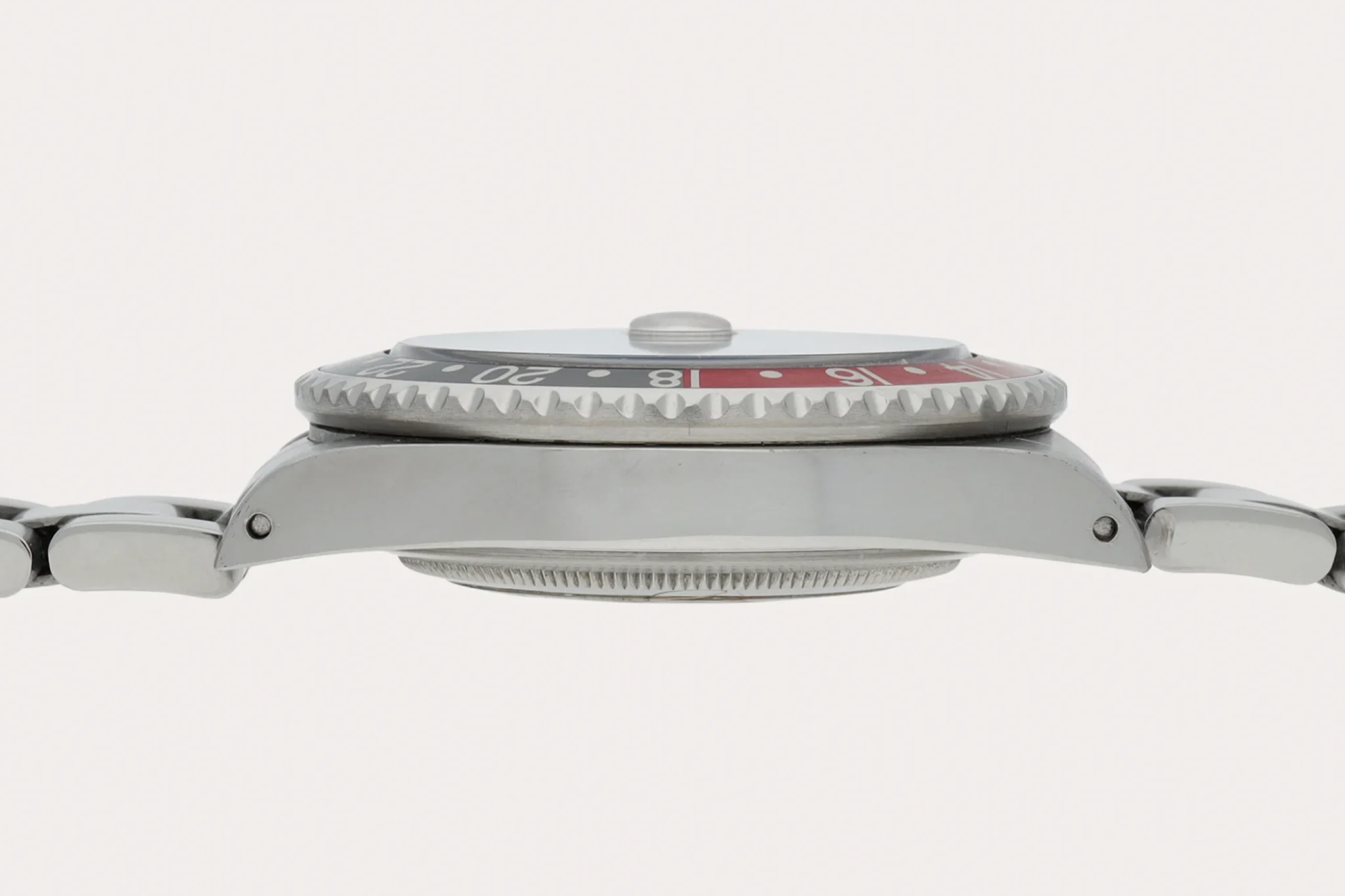
Credit © Sotheby’s
The Ref. 16760 also marked a transition in dial design—from the glossy dials of the 1960s to a more refined glossy aesthetic of the 1980s. This model featured new white gold applied indices and a striking red 24-hour hand that stood out prominently against the dial.
GMT-Master II Ref. 16710 (1989–2007)
Following the bold and distinctly 1980s styling of the Ref. 16760—which played a pivotal role in establishing Rolex as a globally recognised brand—came the next generation: the GMT-Master II Ref. 16710. This reference is notable for two main reasons: it holds the longest production run of any GMT-Master II model, spanning from the late 1980s through the 1990s and into the 2000s, and it was produced in parallel with the final GMT-Master (Ref. 16700), which was discontinued in 1999.

Credit © Phillips
Compared with its predecessor, the Ref. 16710 was equipped with the updated Calibre 3185. This thinner movement featured improved shock resistance and accuracy, ultimately shedding the “Fat Lady” nickname for good. Around 1998, Rolex transitioned from tritium lume to LumiNova. Dials produced between 1989 and 1997 can be identified by the “SWISS – T < 25” marking below the 6 o’clock index—highly coveted by vintage collectors for the unique patina the luminous material develops over time. By 1999, as the Ref. 16700 was phased out, this text was replaced by a simple “SWISS”, reflecting the transition in lume material. From 2000 until the end of production in 2007, Rolex switched again, now using Super-LumiNova. As a result, dials were once more updated—this time bearing the “SWISS MADE” inscription.
Over the course of its long lifespan, the Ref. 16710 was offered in three bezel configurations: black and red (“Coke”), blue and red (“Pepsi”), and all black.
The First Gold Models of the GMT-Master II: Ref. 16713 & Ref. 16718 (1989)
The year 1989 also marked the debut of the first gold GMT-Master II models: Ref. 16713 and Ref. 16718. Ref. 16713 introduced the GMT-Master II concept in a two-tone configuration, featuring the much-admired brown dial and a variation of the so-called “Root Beer” bezel. This model was paired with a Jubilee bracelet, which echoed the two-tone design language. Ref. 16718, on the other hand, offered a more understated look, combining a black dial with a full-black bezel free of day/night demarcation, distinguished by its bold, contrasting numerals.
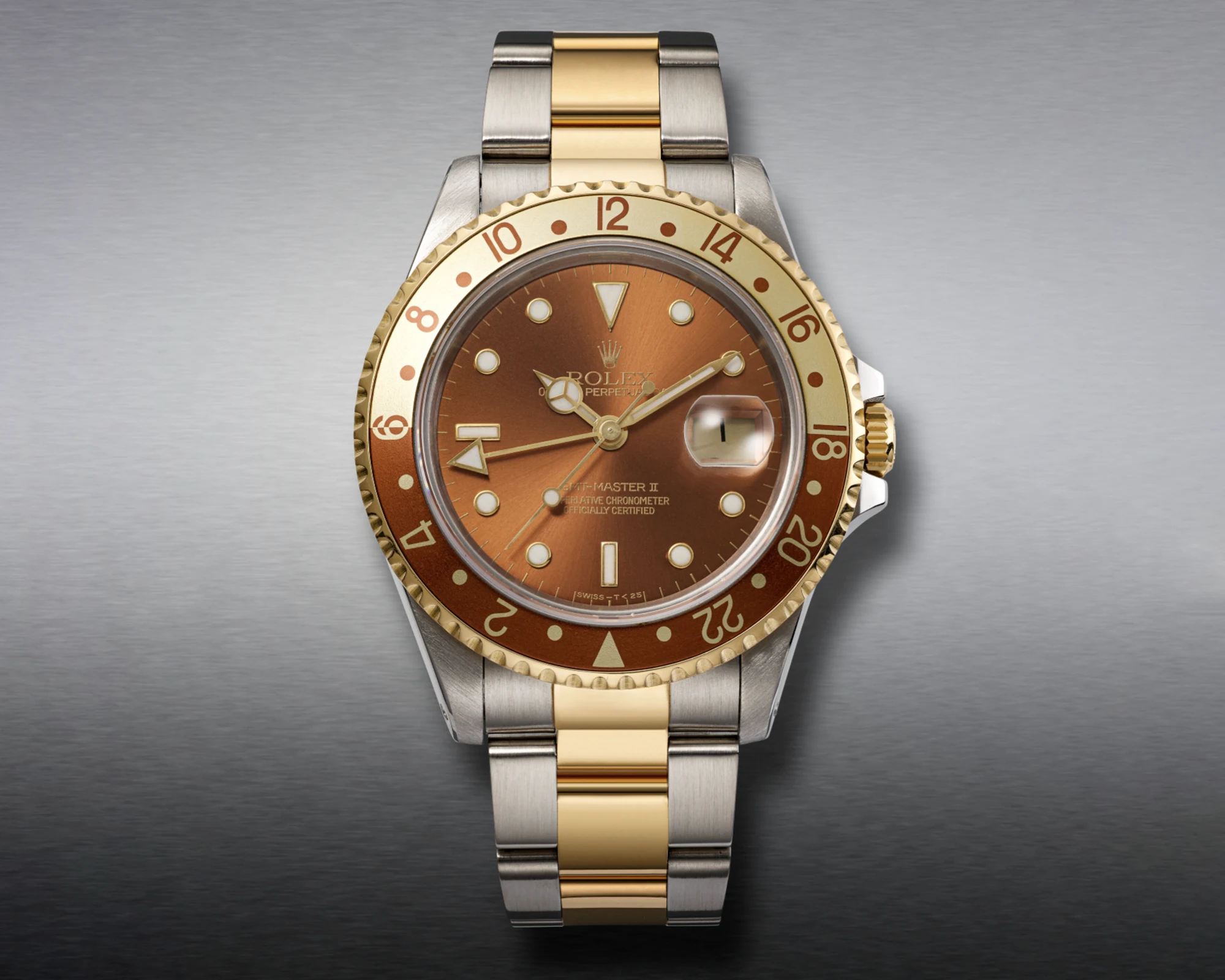
Credit © Christie’s
The Birth of the Modern GMT-Master II: Ref. 116718 (2005)
It is no exaggeration to say that Ref. 116718—unveiled at Baselworld in 2005, exactly 50 years after the original GMT-Master—represents one of the most significant references in the GMT-Master II line. Featuring innovations such as the “Super Case” with broader lugs and a more substantial presence, as well as the scratch-resistant and UV-stable Cerachrom bezel insert, this reference helped define the modern era of the GMT-Master II. Although it retained the traditional 40 mm case diameter, the Super Case introduced a significantly larger bezel with a ceramic insert—marking the very first use of ceramic in a Rolex GMT bezel.
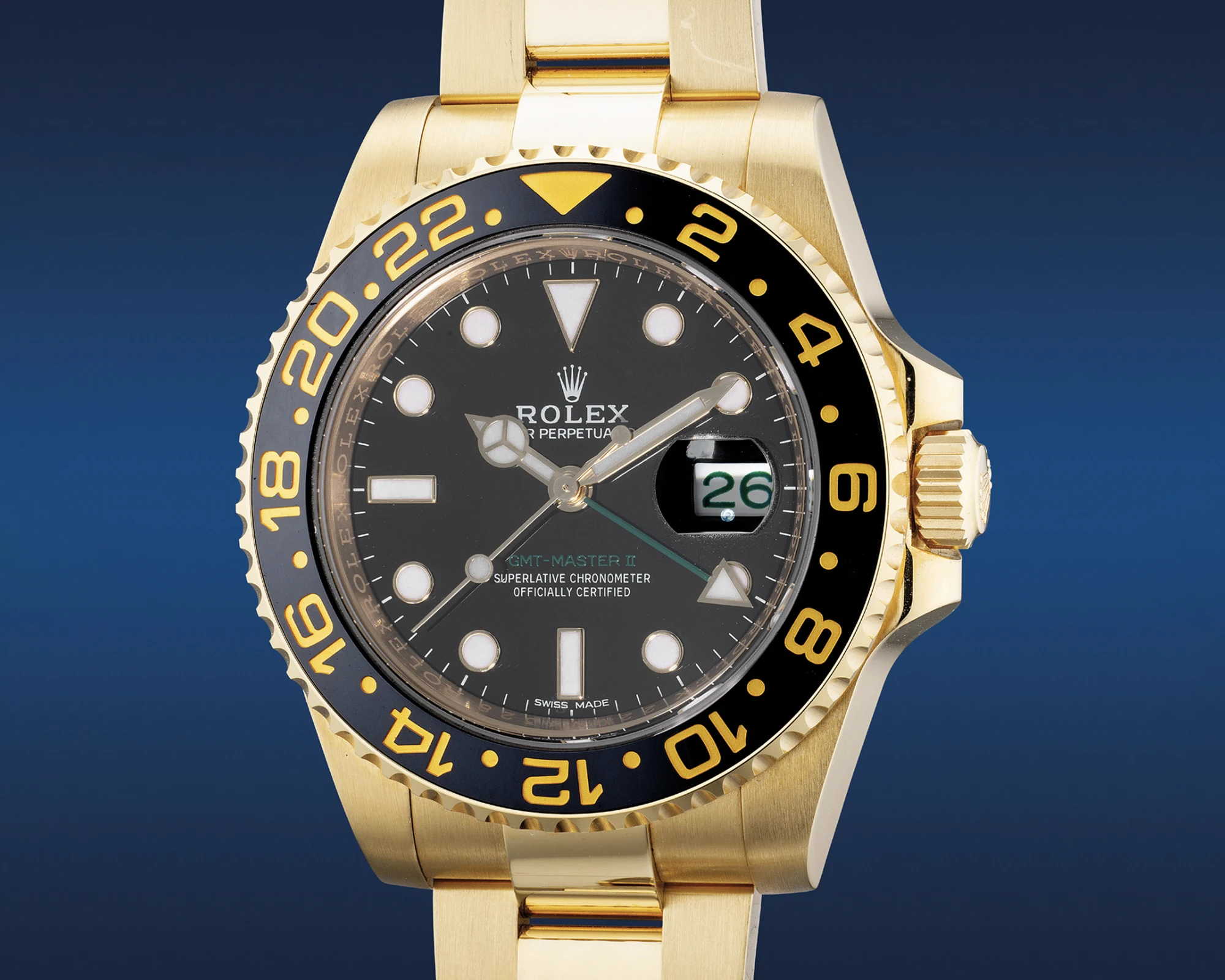
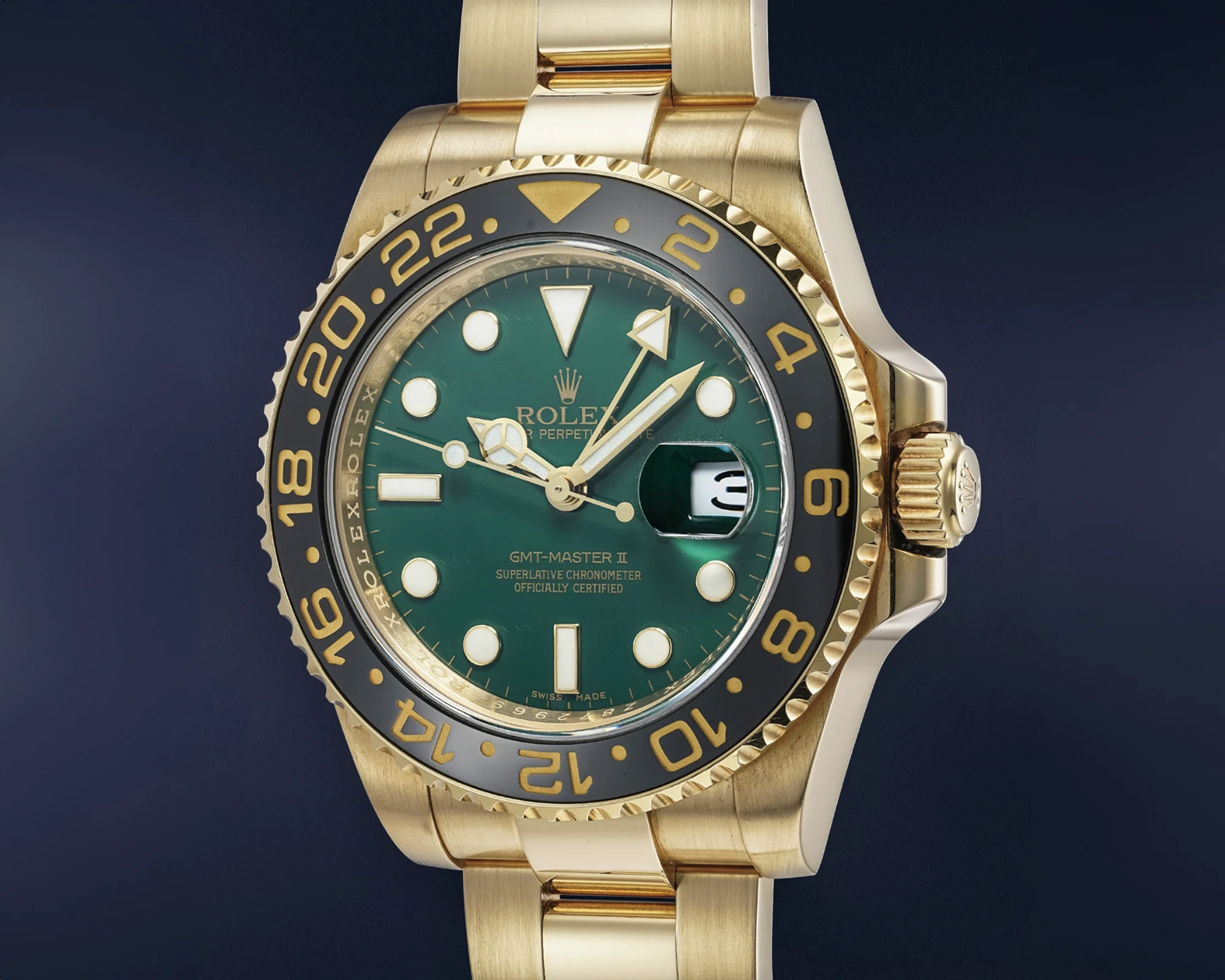
Ref. 116718 was also the first GMT-Master II to feature the so-called “Maxi Dial”, characterised by enlarged dial elements, including notably bolder hour markers and wider hands than its predecessors. Further updates could be found in the bracelet. Ref. 116718 debuted a new Oyster bracelet with an Oysterlock folding clasp, designed to match the robust feel of the watch case—a notable improvement over earlier models. It was also among the first Rolex models to feature the engraved Rolex rehaut (inner bezel ring).
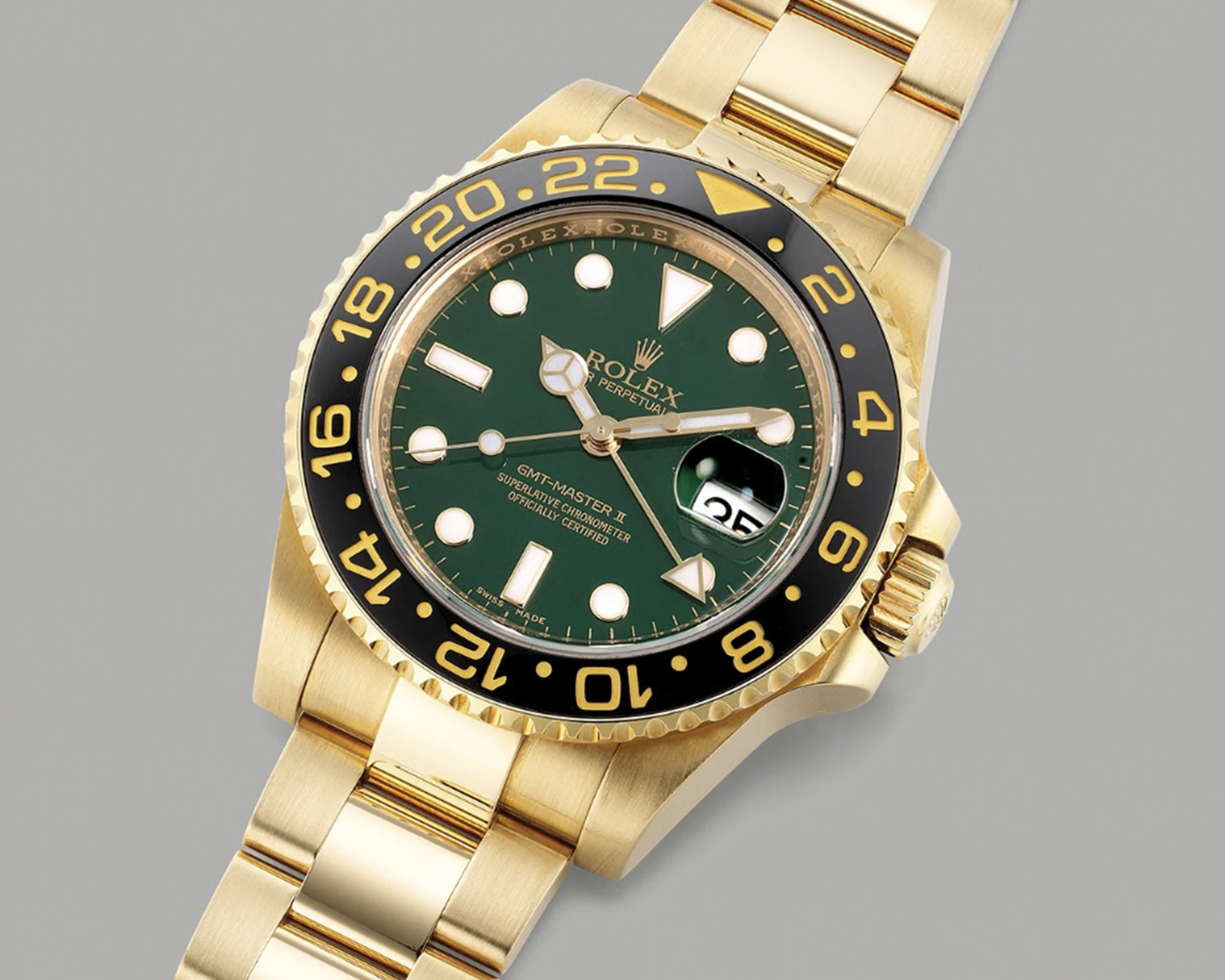
Credit © Phillips
Inside, the watch housed the automatic Calibre 3186, which would also be used in subsequent models. The most important technical advancement was the inclusion of the Parachrom Bleu hairspring with Breguet overcoil, offering increased shock resistance and strong anti-magnetic properties. The movement also included a quickset date and a power reserve of approximately 50 hours.
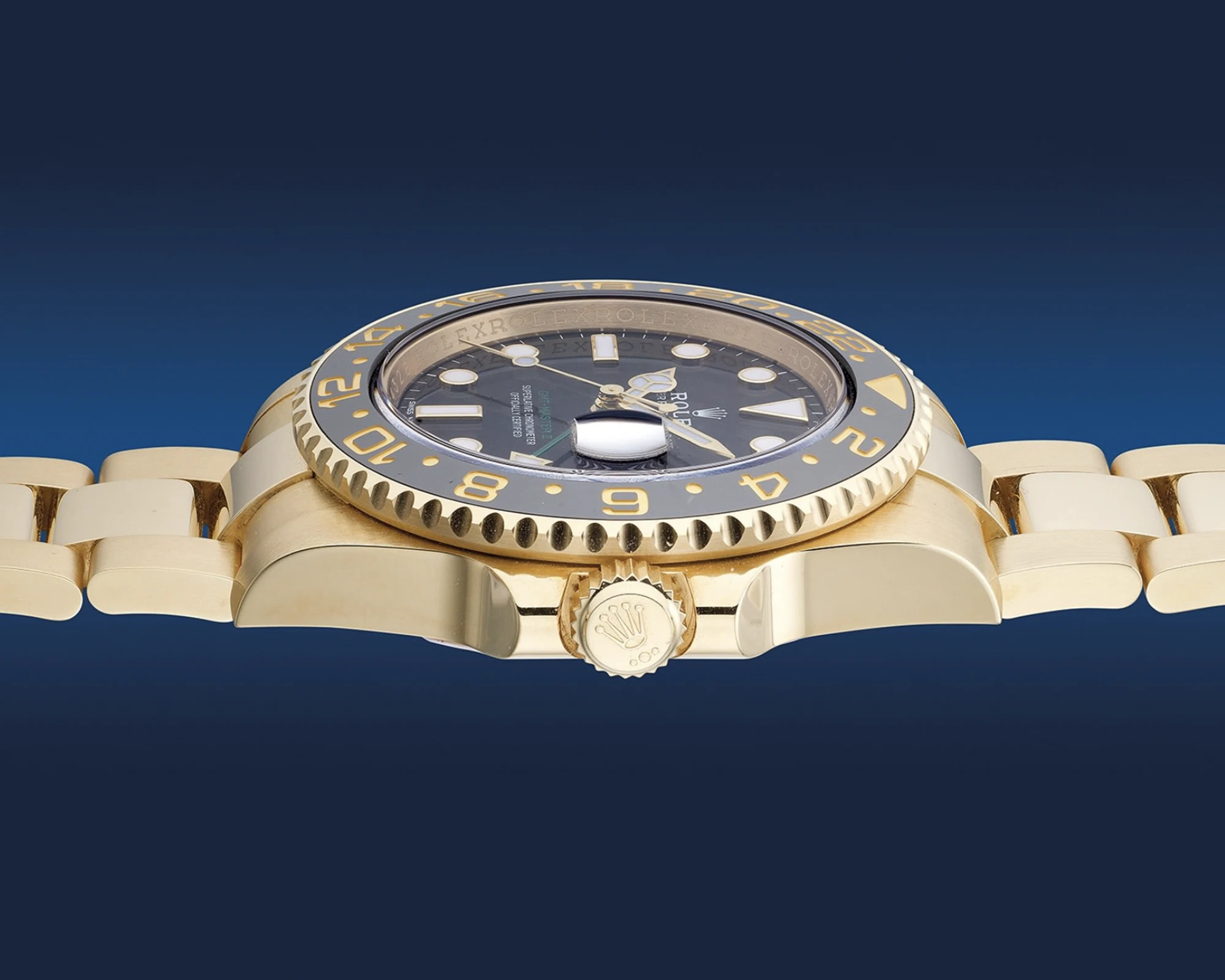
Credit © Phillips
More technically refined and modern in both design and proportions, Ref. 116718LN marked a turning point not only for Rolex but for the identity of the GMT-Master II itself—shifting from its roots as a sporty tool watch to a more luxurious, contemporary interpretation. It was offered in two variations: one with a black dial and matching black bezel, and a striking edition with a green dial and black bezel—marking the first time this colour combination had been used on a GMT-Master model.
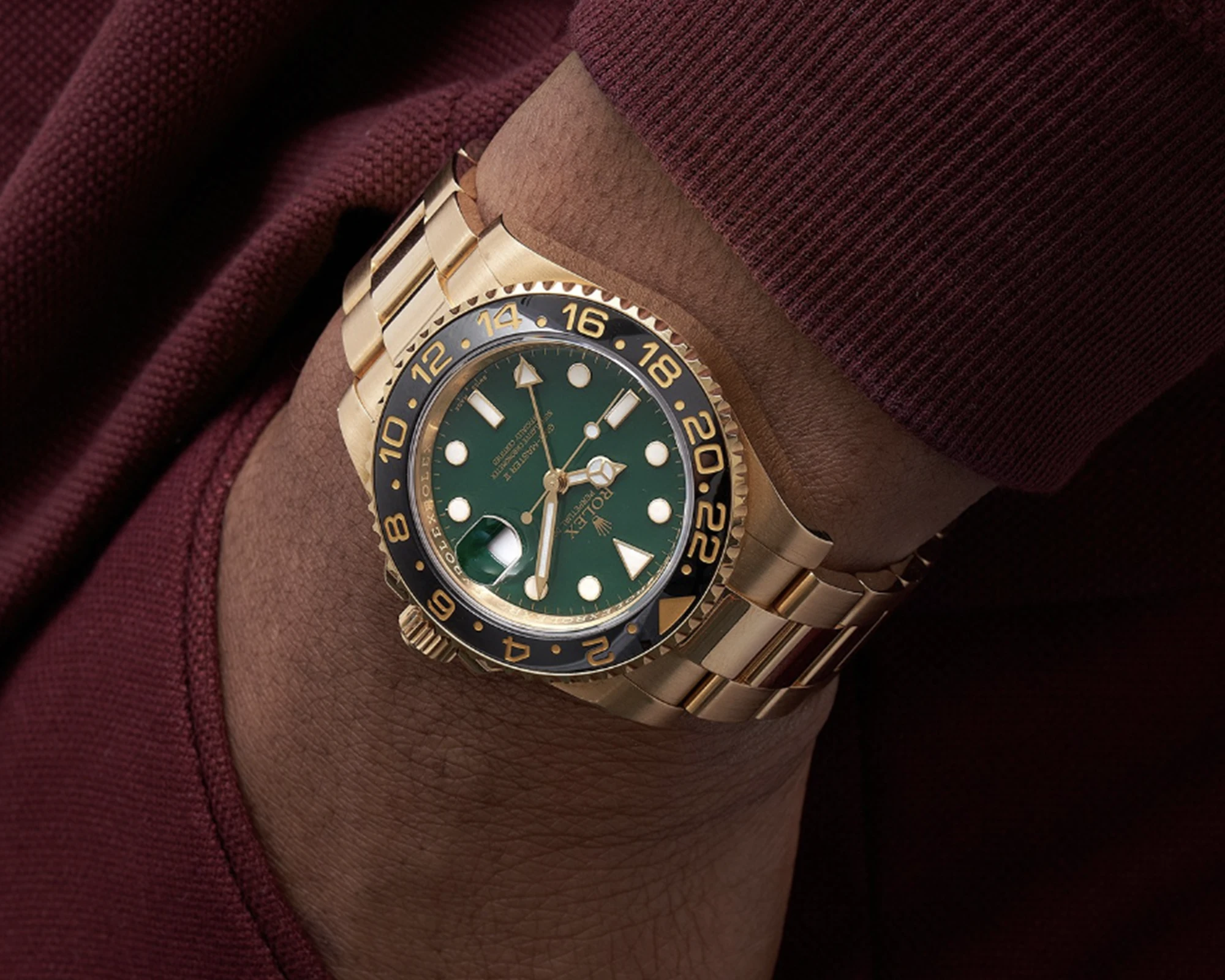
Credit © Phillips
Ref. 116710LN (2007–2019)
In 2007, Rolex unveiled Ref. 116710, a model that carried forward the key attributes of the 116718—including the Cerachrom bezel, Super Case, Maxi Dial, and Calibre 3186—into a standard production reference. Its defining detail was a green lacquered 24-hour hand, which stood out as a stylistic departure from the red-tipped GMT hands typically used up to that point.
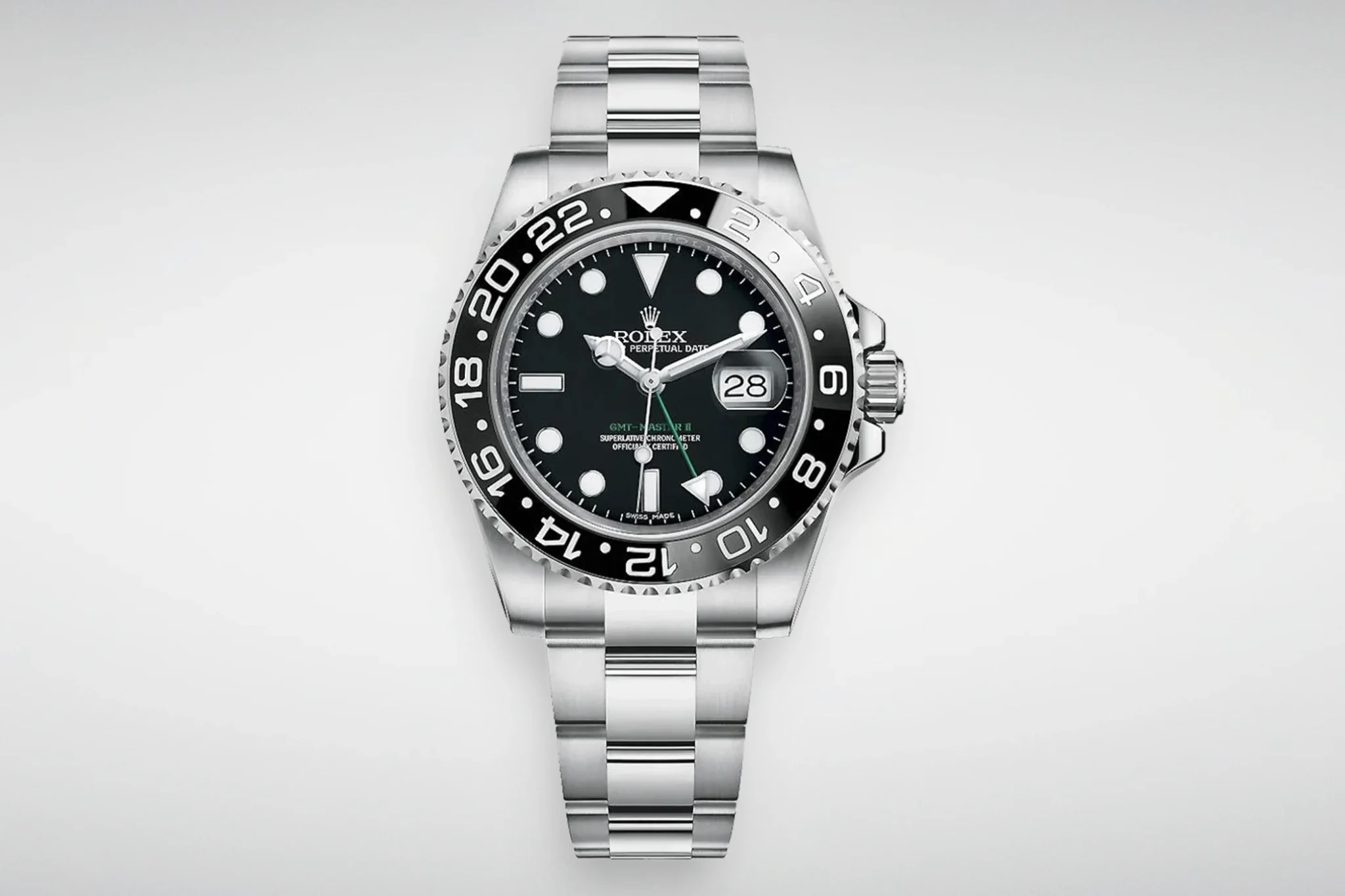
Alongside it, Rolex launched Ref. 116713: a Rolesor version, combining 18-carat yellow gold (bezel, crown, and centre links of the bracelet) with stainless steel (case and outer bracelet links). Rolesor—Rolex’s term for its two-tone watches—gave the GMT-Master II an even more luxurious feel, appealing to collectors seeking a dressier, more elevated aesthetic.
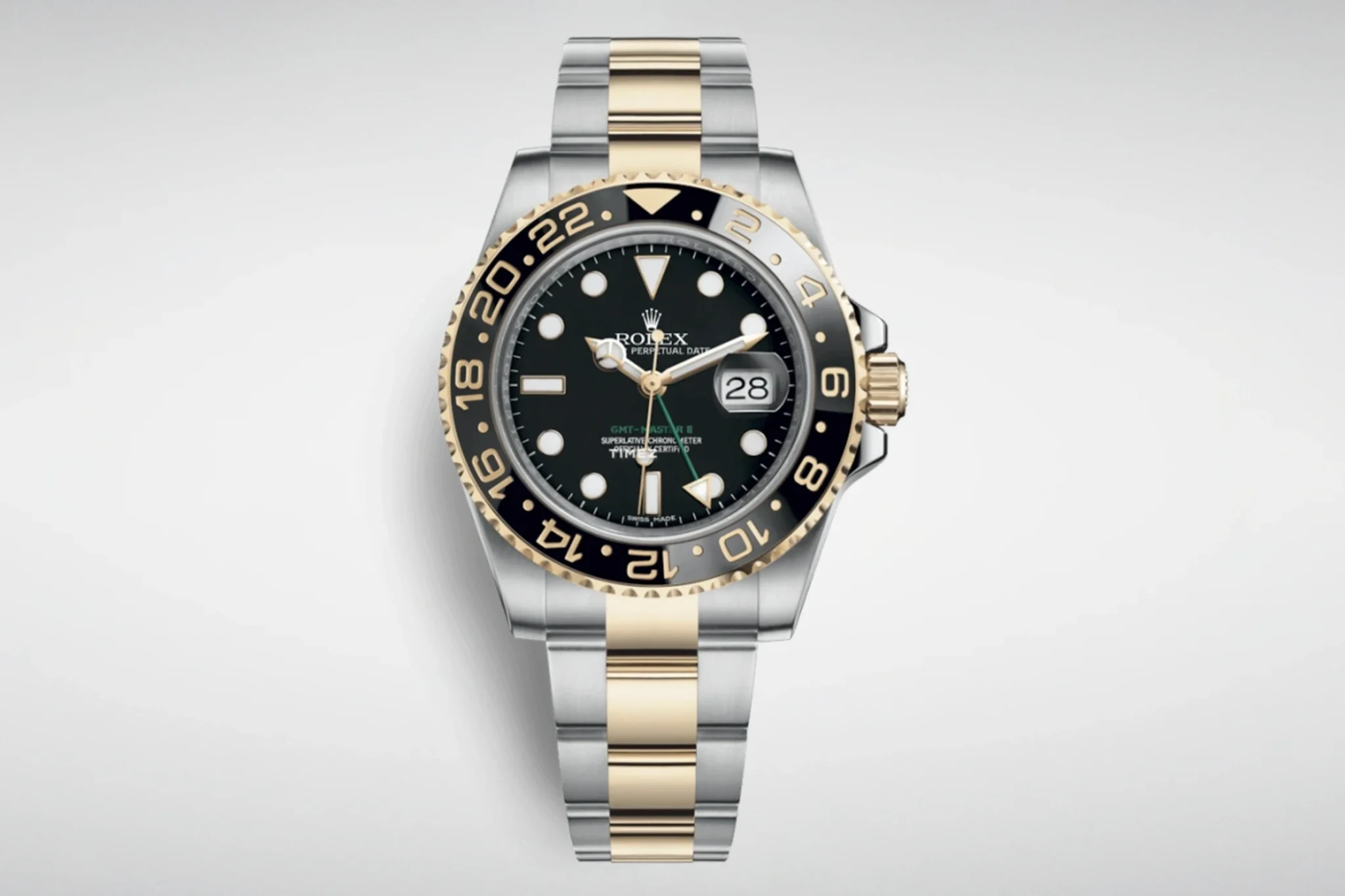
The Innovative Chromalight Luminous Material
First introduced as standard on the Deepsea Sea-Dweller in 2008, Rolex’s proprietary luminous material known as Chromalight also found its way into the GMT-Master II Ref. 116710LN. The substance is composed of a fine oxide powder derived from aluminium, strontium, dysprosium, and europium compounds. It is fired at high temperatures, forming a crystalline structure with phosphorescent properties.
This structure absorbs ambient light and emits it in a uniform blue glow in low-light conditions. The powder is mixed with a liquid resin and then applied to the hour markers and hands. What sets Chromalight apart is not only its distinctive blue luminescence, but also its long-lasting and consistent glow, which can remain visible for up to eight hours.
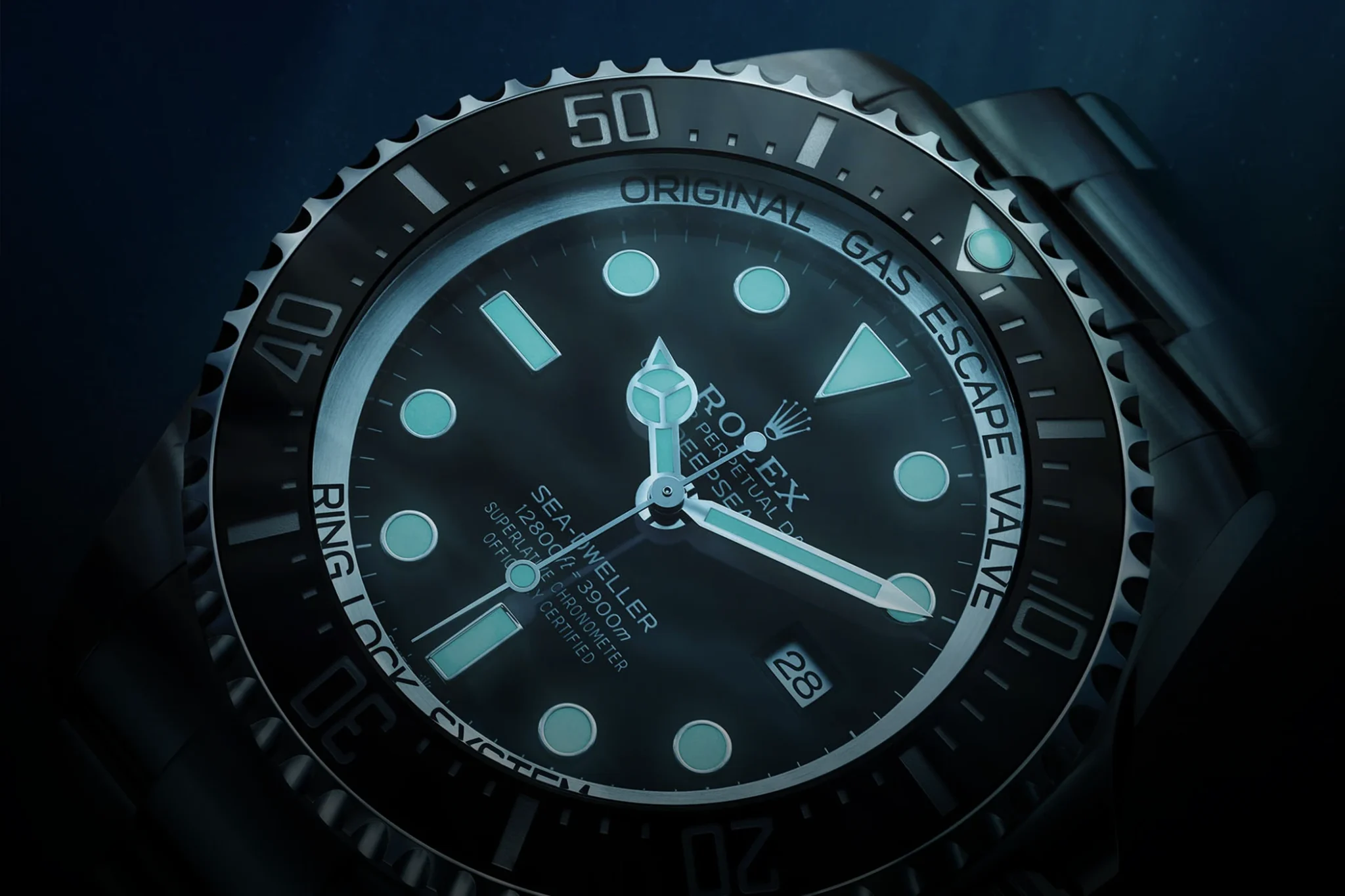
The “Batman”: Ref. 116710BLNR (2013–2019)
While the Ref. 116710 had featured a solid black bezel, its successor brought about a striking shift in design. With Ref. 116710BLNR, Rolex introduced a bezel that paired two contrasting colours: black on one half and blue on the other. This became known as the “Batman”—one of the most iconic iterations of the GMT-Master II. The popularity of the blue-and-black colour scheme—used for the first time in this model—was due to its subtle update of the all-black bezels of earlier references, now enhanced by the addition of a blue GMT hand and matching blue bezel segment.
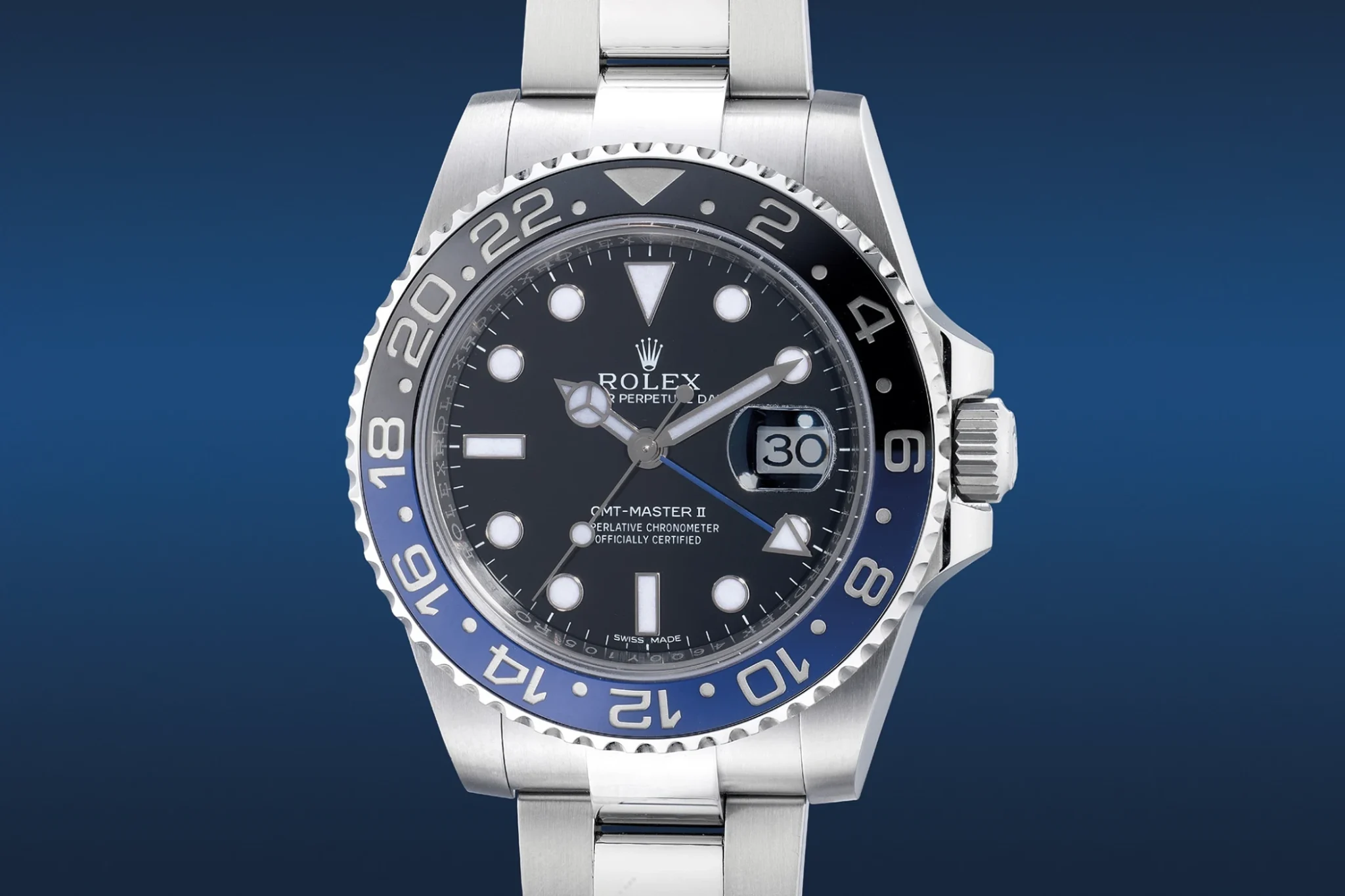
Credit © Phillips
The First Two-Tone Cerachrom Bezel Insert
The distinctive colour separation of the “Batman” bezel was achieved using a pioneering manufacturing method, debuted with Ref. 116710BLNR. Each Cerachrom bezel insert begins as a fine powder of zirconium oxide or aluminium oxide, with particles smaller than a micron. This ceramic base is combined with binding agents and pigments to achieve the desired colour.
The material is then pressed into a mould under high pressure, giving it its final shape and recessed numerals, graduations, and markers. The binding agents are removed, and the piece is sintered at approximately 1,600 °C—a process that hardens the ceramic and locks in the colour. During this firing stage, the insert shrinks by around 25–30% and acquires its final hue. To achieve precise dimensions, the hardened ceramic is then machined using diamond-tipped tools.
For bi-colour Cerachrom inserts like that of the “Batman”, Rolex developed a unique in-house technique. A fully blue bezel insert is treated with a chemical solution on one half prior to sintering. During the heat treatment, this solution reacts with the ceramic to permanently change the treated portion to black—resulting in a two-tone bezel crafted from a single ceramic piece.
The Current “Batman”: Ref. 126710BLNR (2019–present)
Technically, Ref. 116710BLNR with its Calibre 3186 followed the same specifications as previous GMT-Master II models. However, that changed with the next significant development: Ref. 126710BLNR, introduced in 2019 and still in production today. While visually staying true to the original “Batman”, this new iteration added a Jubilee bracelet and an important technical upgrade—Calibre 3285 featuring the Chronergy escapement.
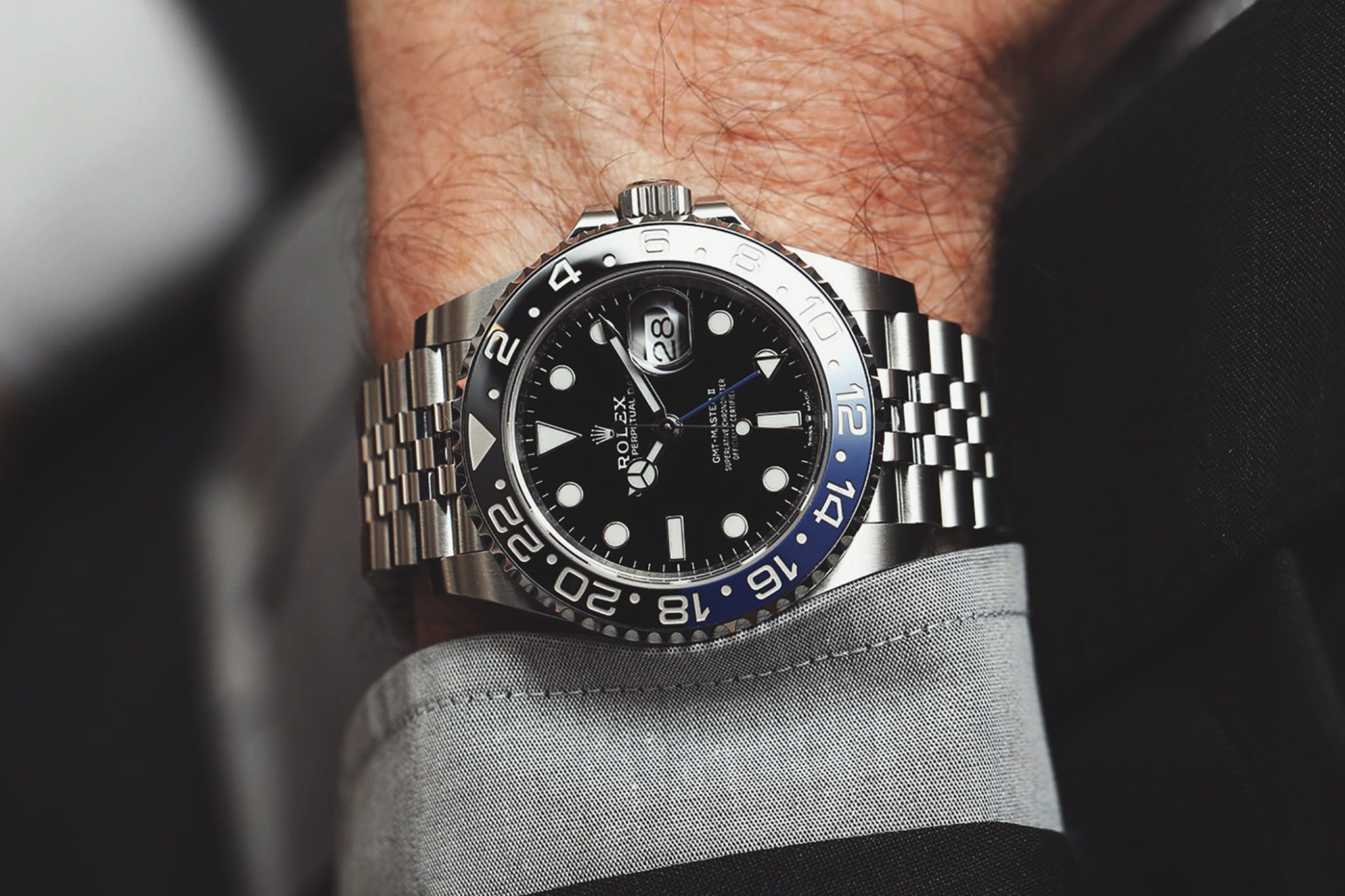
GMT-Master II “Pepsi” Ref. 116719BLRO (2014–2018)
Collectors admired the colourful flair of the “Batman”, seeing it as a sign of hope for the return of a “Pepsi” bezel—a design rooted in the very first GMT-Master. Their wish was granted in 2014, with the release of the GMT-Master II “Pepsi” Ref. 116719BLRO, the first GMT-Master II crafted in white gold. However, its full white gold construction made the watch prohibitively expensive for a wider audience.
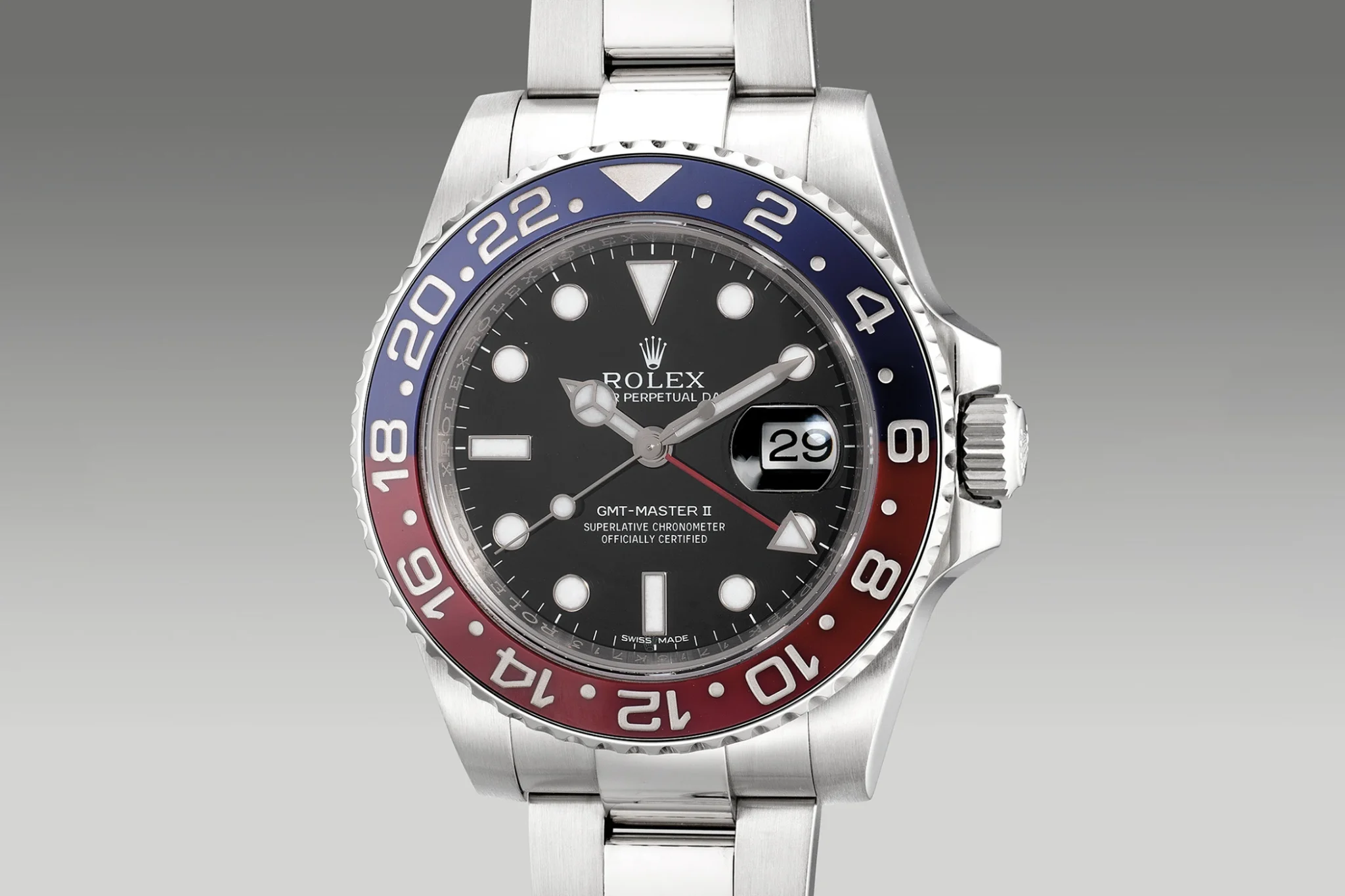
Credit © Phillips
In 2018, Rolex would finally address the broader collector community by launching a stainless steel Pepsi version—but more on that in a moment.
GMT-Master II Ref. 126715CHNR “Root Beer” (2018–present)
The year 2018 brought not just one, but two major novelties to the GMT-Master II collection. One was the introduction of the first GMT-Master II in 18-carat Everose gold, Ref. 126715CHNR, joining the white gold model. This reference featured a black-brown ceramic bezel in the “Root Beer” style, paired with a black dial. At the same time, Rolex introduced Ref. 126711CHNR, a two-tone variant combining Everose gold and stainless steel.

©Rolex/ Guillaume Mégevand
At this year’s Watches and Wonders, Rolex unveiled an additional Root Beer version in Everose gold, now fitted with a striking tiger iron dial—a decorative stone combining golden, orange, and reddish tones. Everose gold was first introduced by Rolex in 2005 and is used in all Oyster models crafted in rose gold. According to the brand, the alloy is produced in its own foundry. Technically, Ref. 126715CHNR features a 40 mm case and houses the automatic Calibre 3285, offering a 70-hour power reserve.
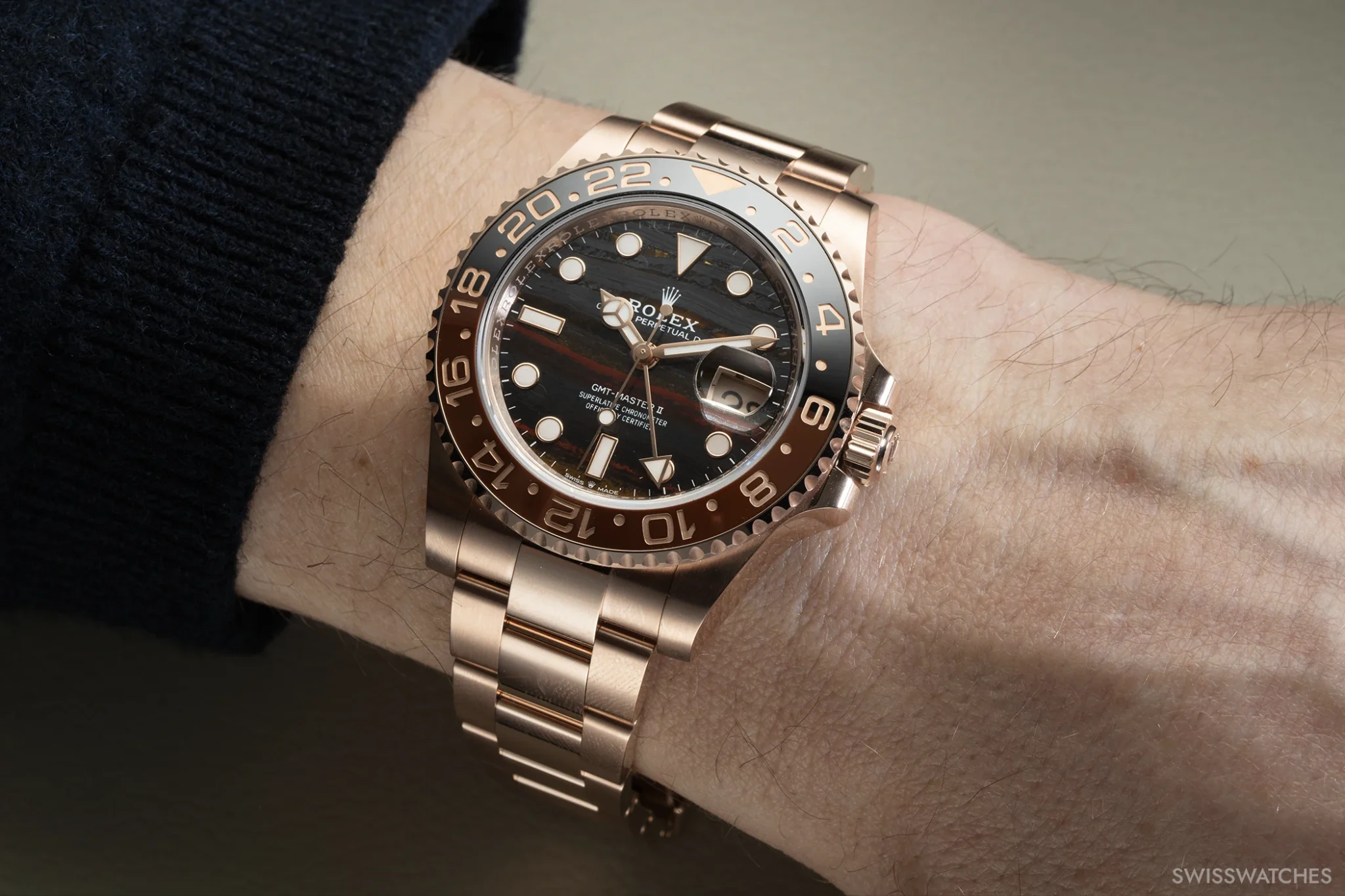
GMT-Master II Ref. 126710BLRO “Pepsi” (2018–present)
In 2018, collectors finally received what they had long been waiting for: the return of the Pepsi bezel on a steel GMT-Master II. Ref. 126710BLRO combined the red-and-blue bezel with a Jubilee bracelet, black dial, and red 24-hour hand.
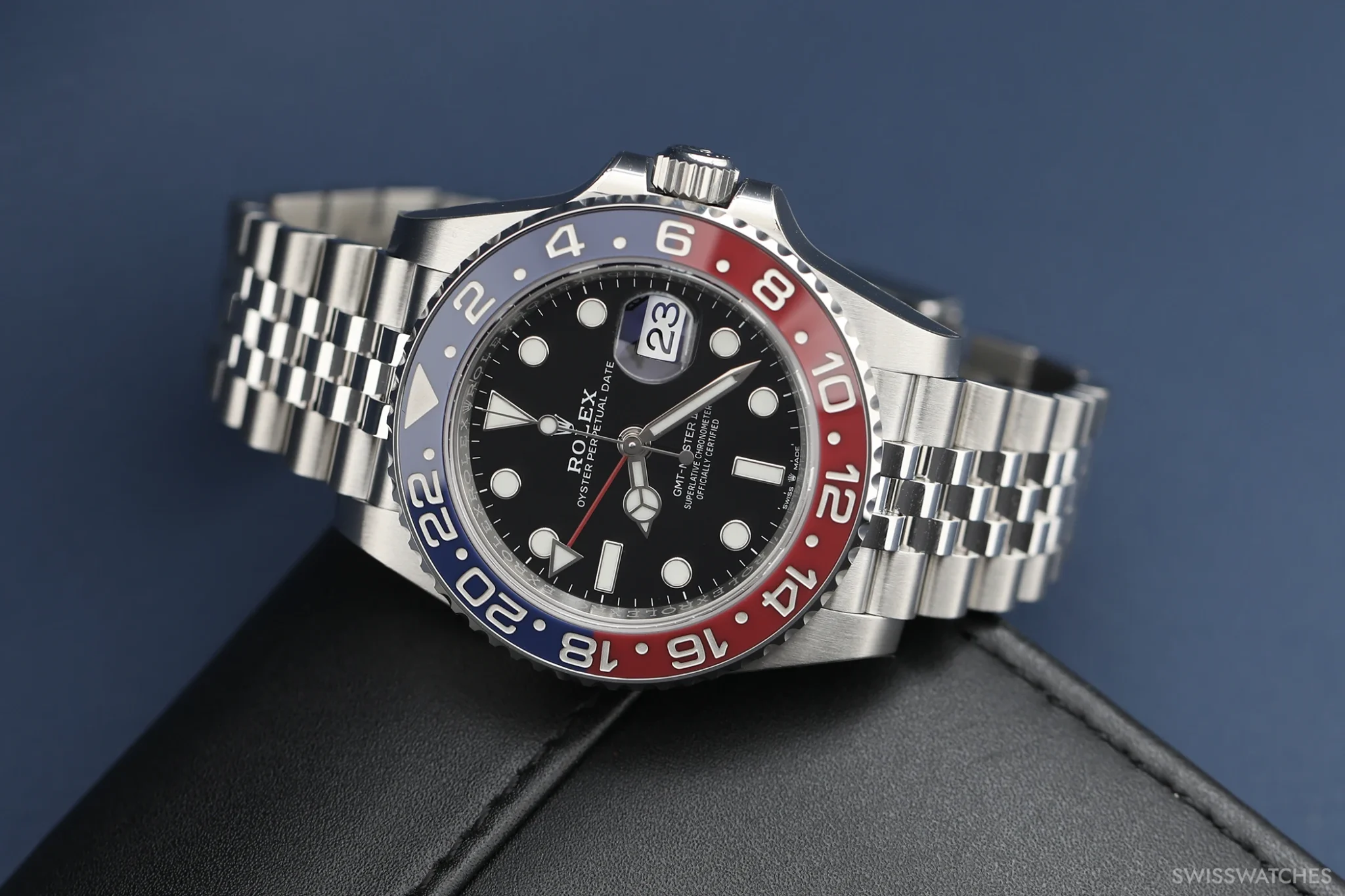
The real advancement, however, lay inside the watch: from 2018 onwards, the newly developed Calibre 3285 powered the latest GMT-Master II references. This calibre increased the power reserve from 50 to 70 hours and incorporated around ten new patents—including an optimised barrel architecture, an oscillator with a blue Parachrom hairspring, and the energy-efficient Chronergy escapement. These innovations contributed not only to improved reliability and magnetic resistance, but also ensured a precision rate of ±2 seconds per day.
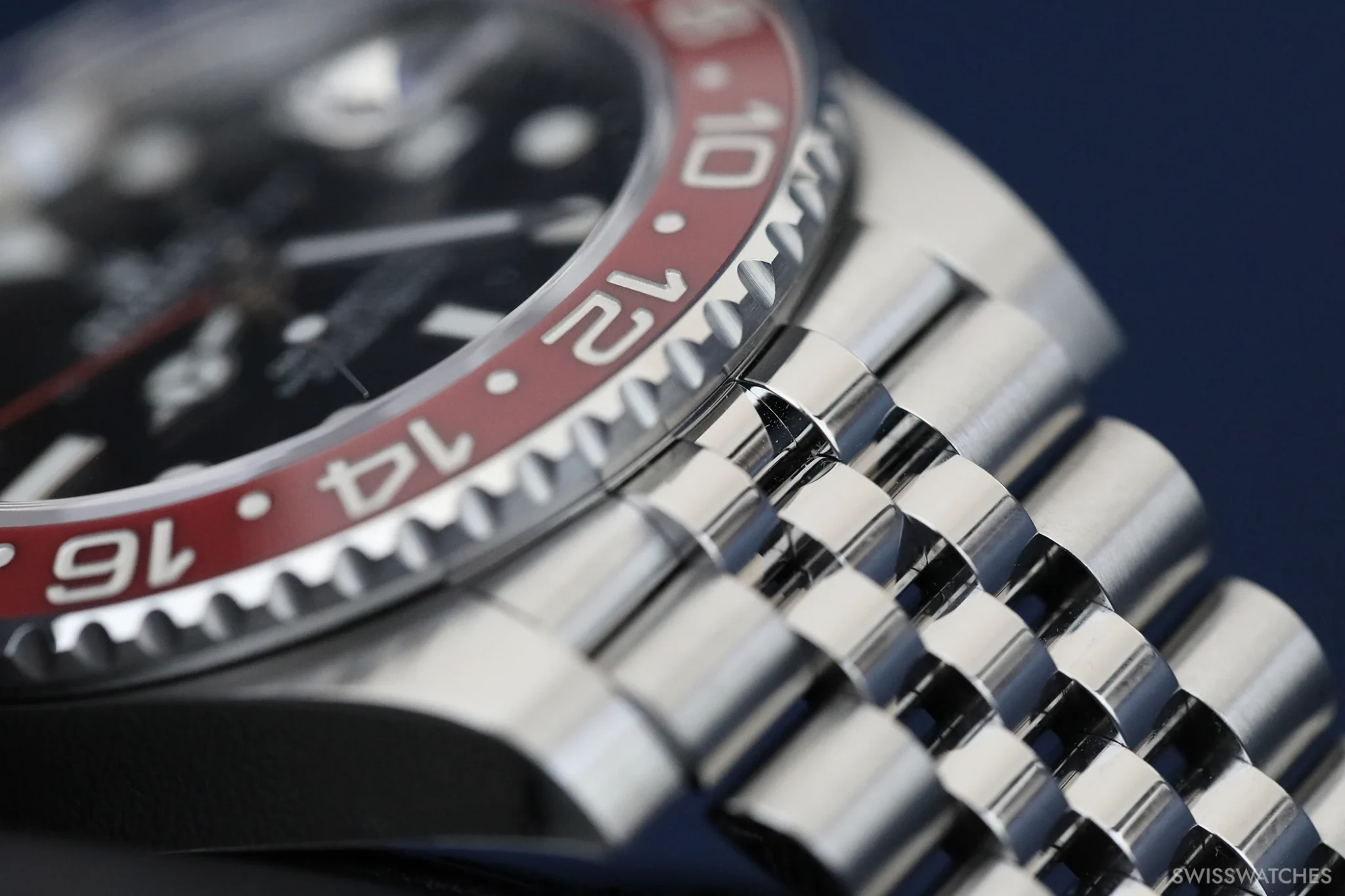
White gold Pepsi models, meanwhile, are now available with either a blue or meteorite dial (Ref. 126719BLRO).
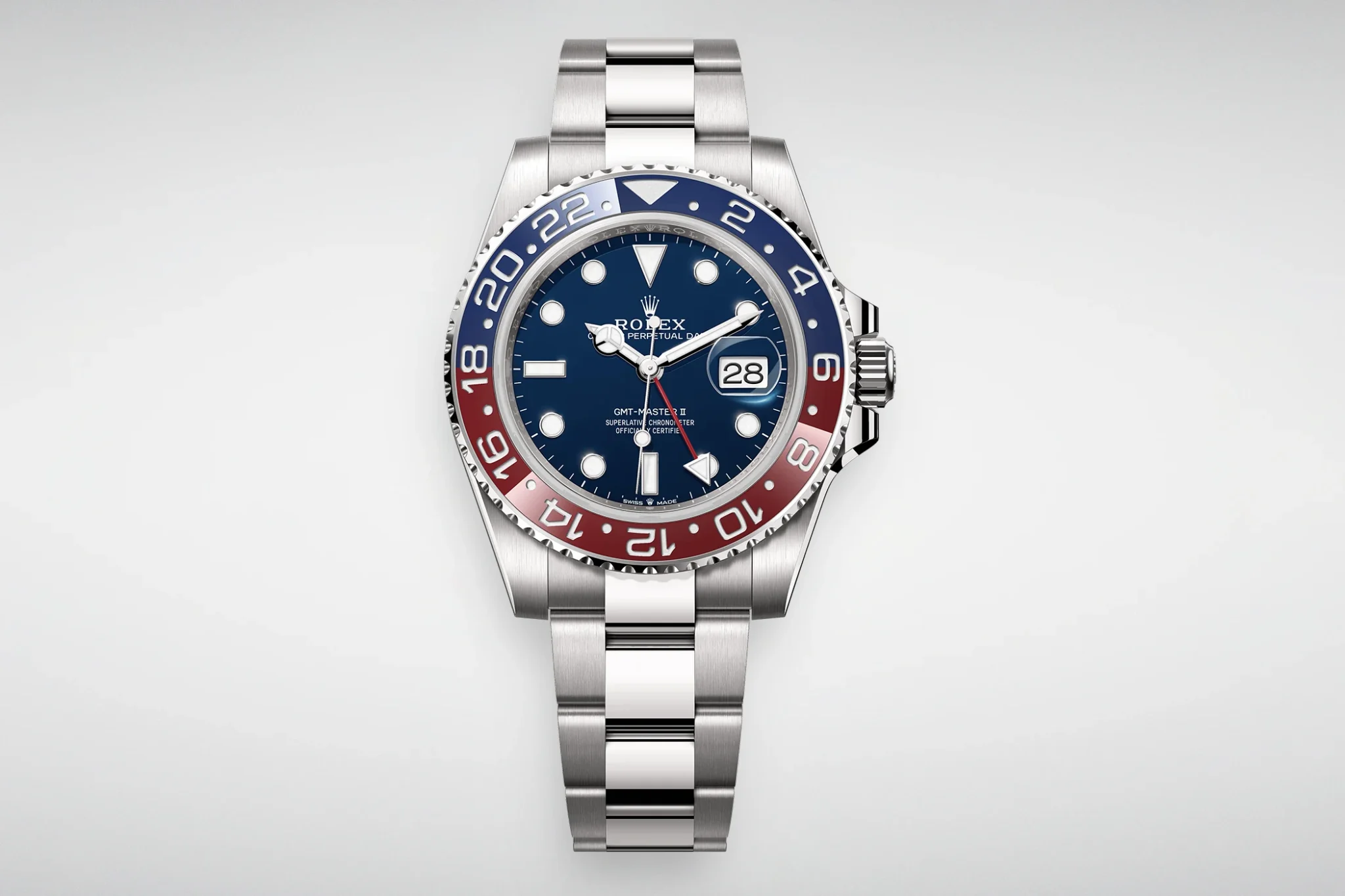
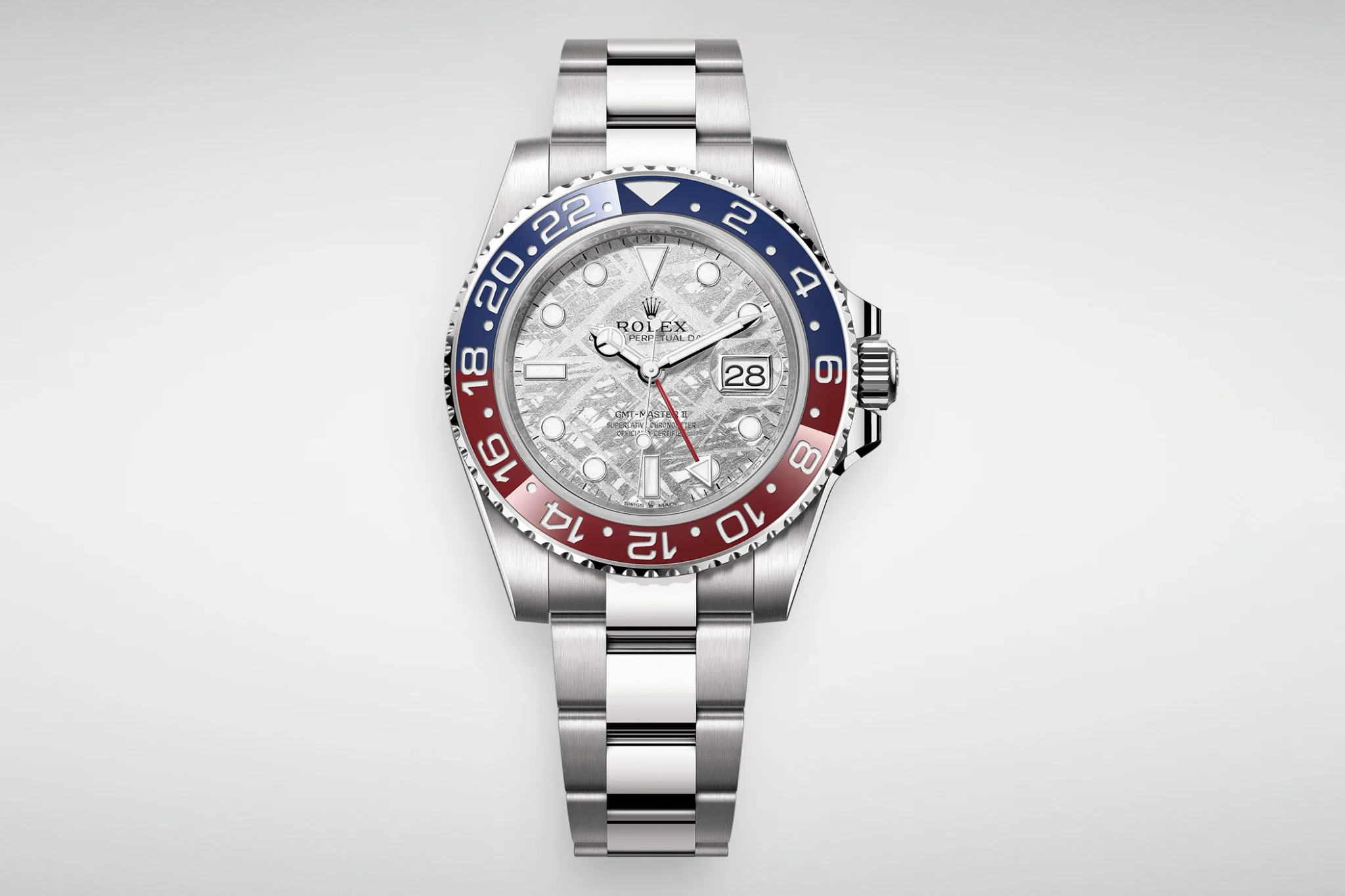
The Left-Handed GMT: GMT-Master II “Sprite” Ref. 126720VTNR (2022–present)
With the launch of the Ref. 126720VTNR “Sprite”, Rolex added a bold and controversial twist to the GMT-Master II collection: a black-and-green bezel—the first of its kind—and, more significantly, the repositioning of both the crown and date window to the left-hand side of the case at 9 o’clock.
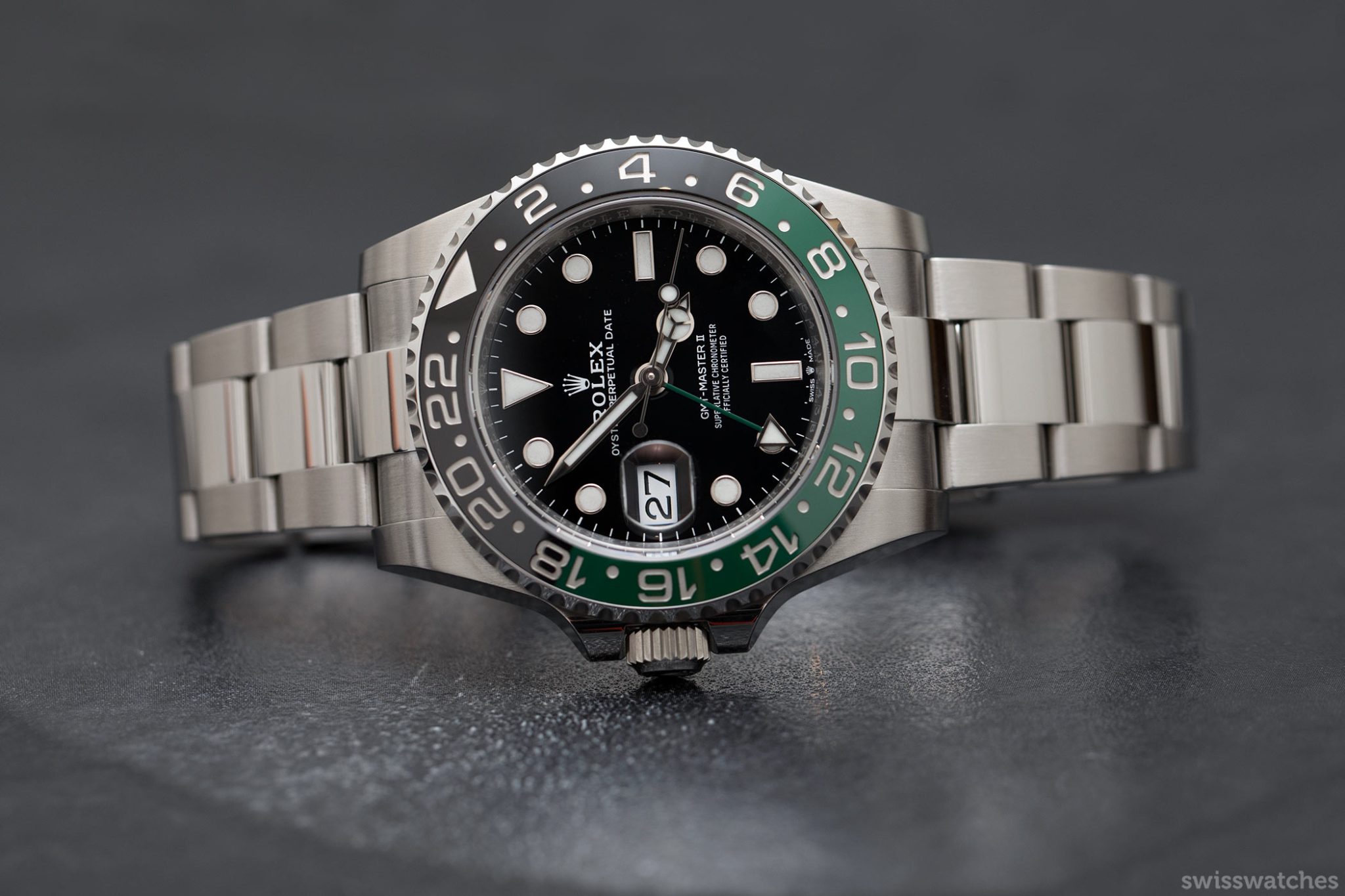
What truly divided the watch community, however, was not the left-side crown layout—historical examples like a Ref. 6542, auctioned by Phillips in 2018 for around €242,250, already exist. Nor was it the green hue of the Cerachrom bezel, reminiscent of the beloved green from the Submariner Date “Kermit”.
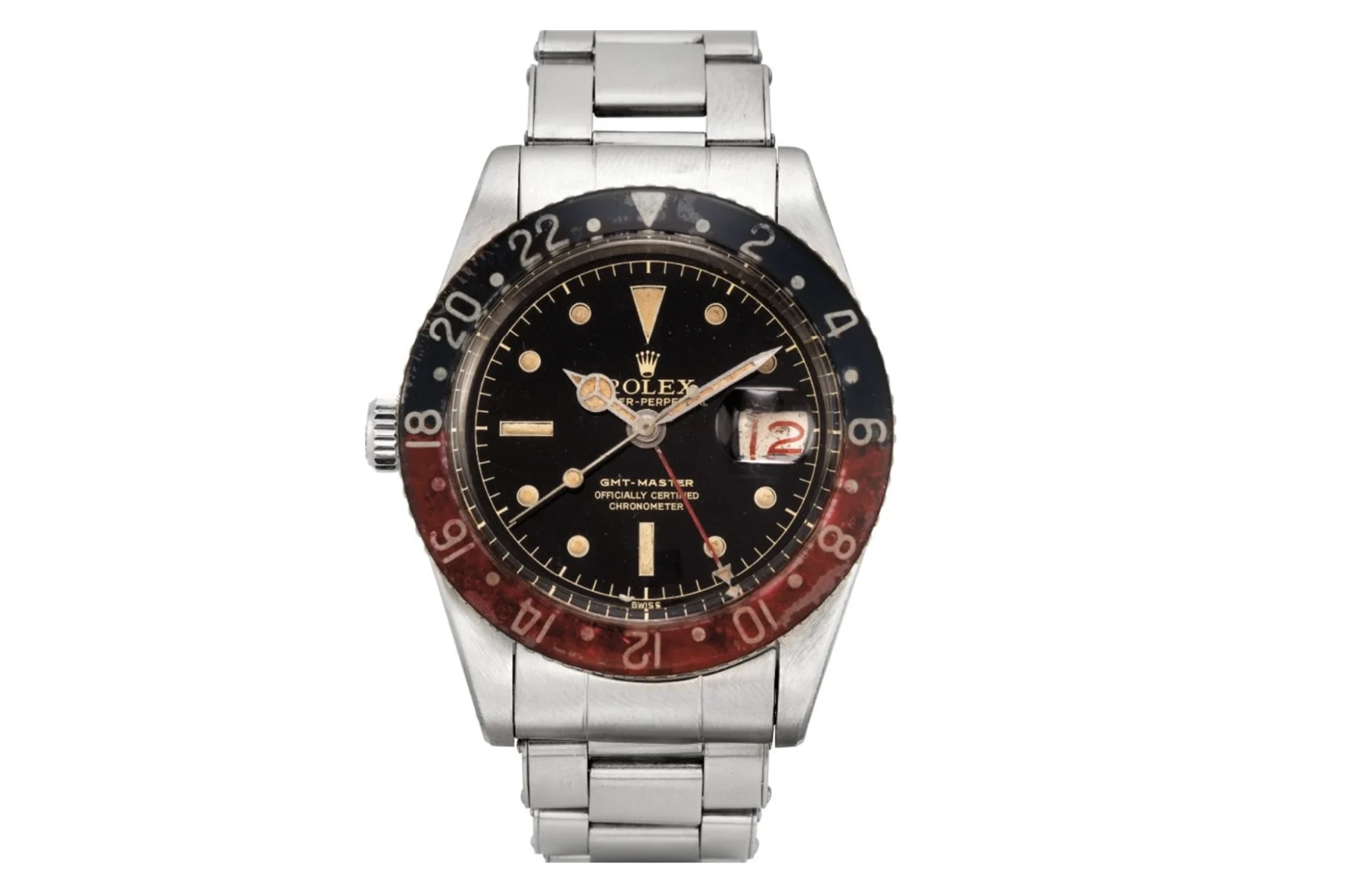
Credit © Phillips
Instead, it was the left-positioned date, magnified further by the Cyclops lens, that drew the most commentary. Technically, the Sprite followed in the footsteps of earlier models with the automatic Calibre 3285, offering a 70-hour power reserve.
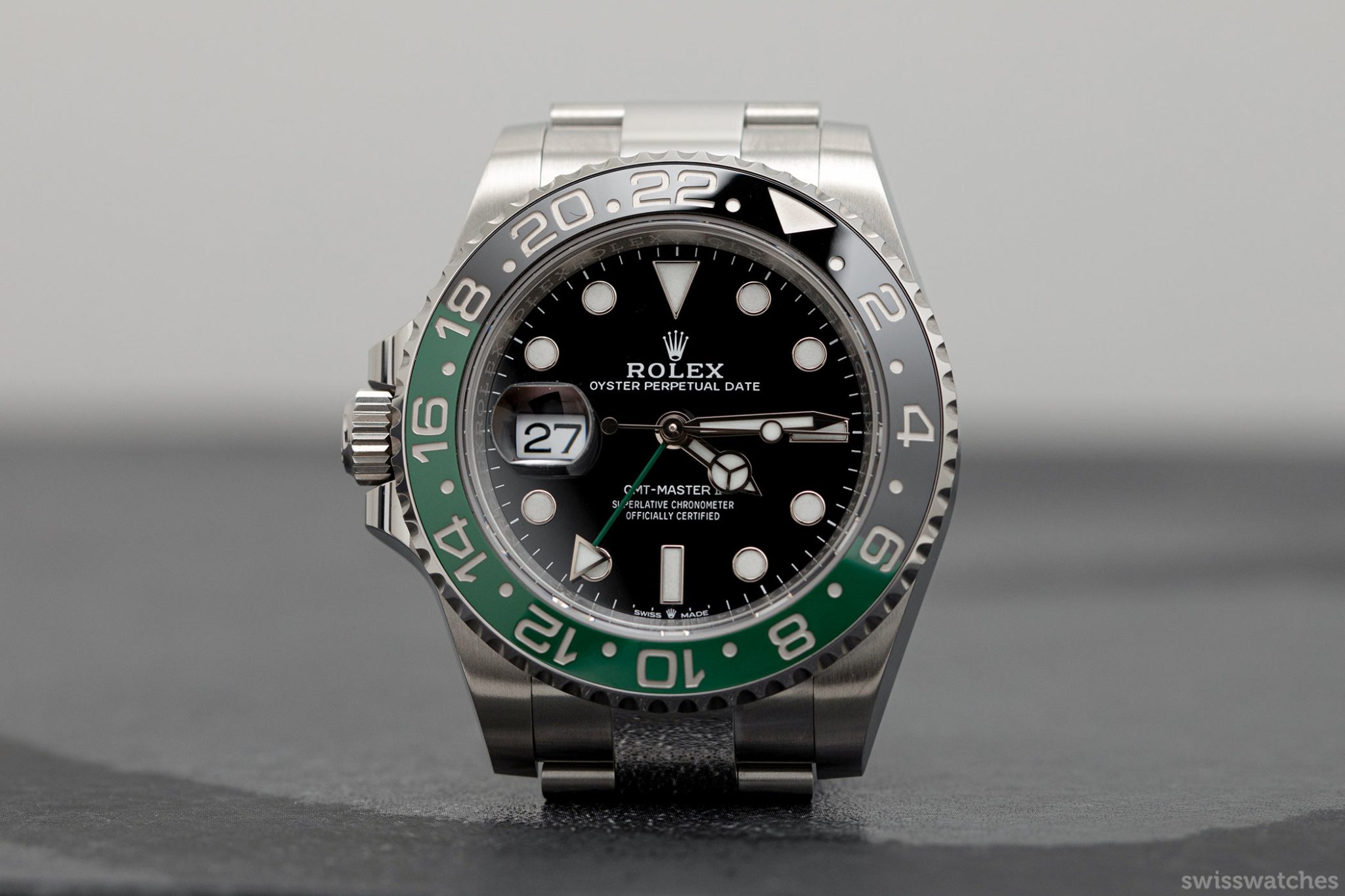
In 2024, the model was thrust back into the spotlight with a new version—Ref. 126729VTNR—featuring two world premieres: Firstly, it became the first GMT-Master II to incorporate a ceramic dial—made from the same material as the bezel. Secondly, it was the first left-handed GMT-Master II in a white gold case.
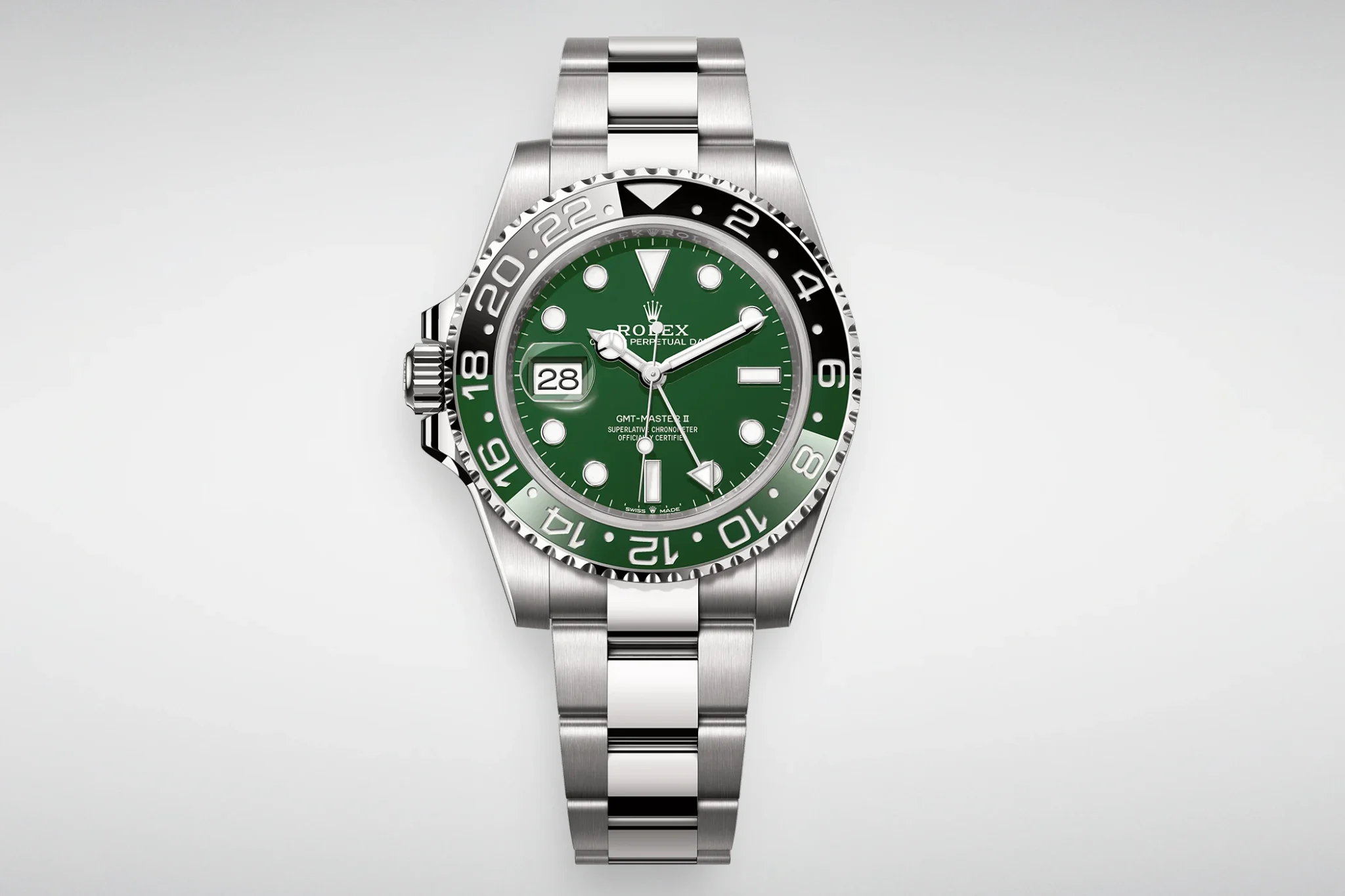
The “Bruce Wayne”: Ref. 126710GRNR (2024–present)
By contrast, Ref. 126710GRNR embraced a more understated aesthetic, combining a black-and-grey bezel with a green GMT hand. Presented as a more restrained version of the GMT-Master II, it was quickly dubbed “Bruce Wayne” by collectors.
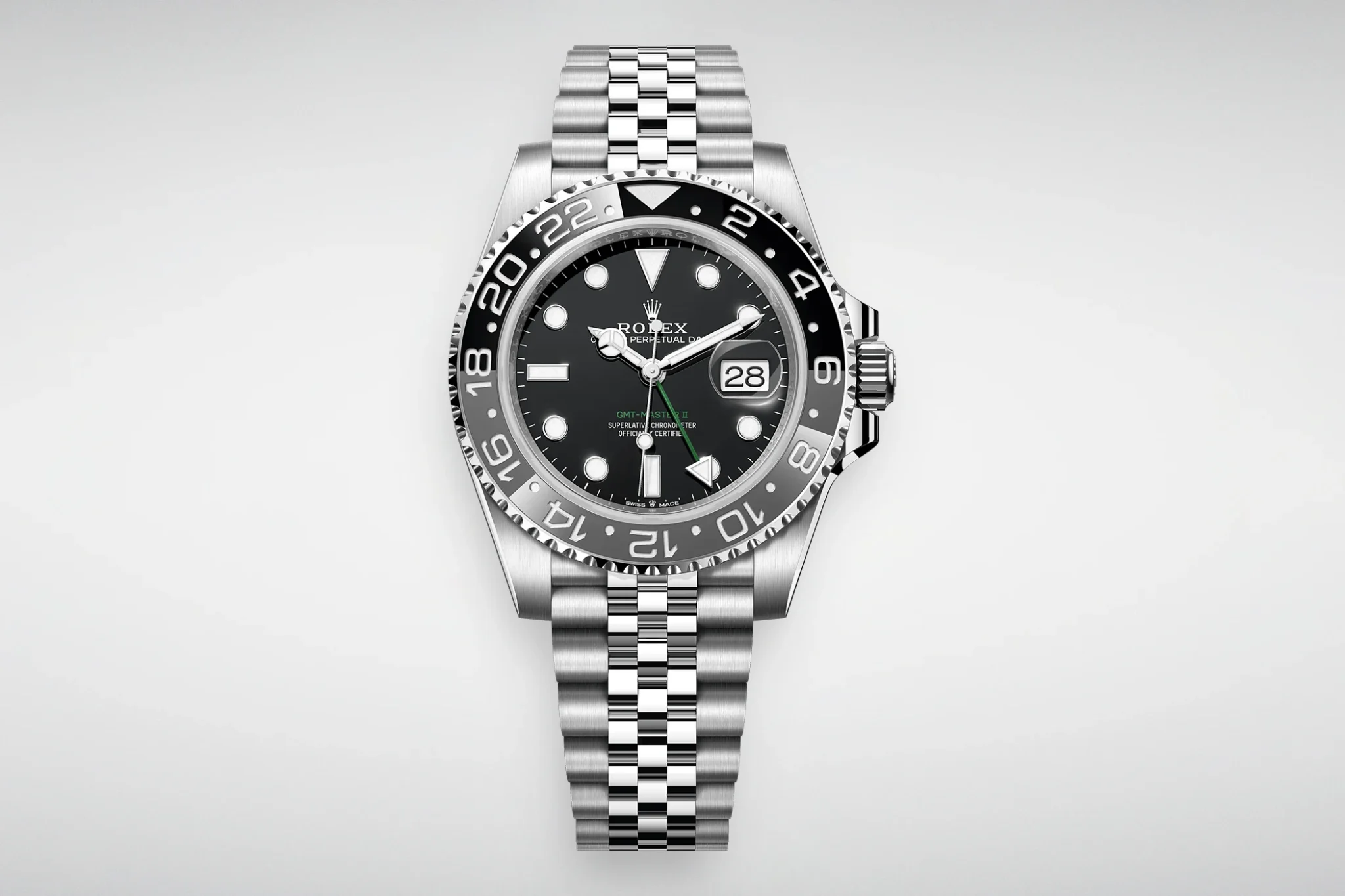
The bezel design itself was not entirely new — it had first appeared in the yellow gold and two-tone Rolesor versions introduced in 2023 (Refs. 126718GRNR and 126713GRNR, respectively).
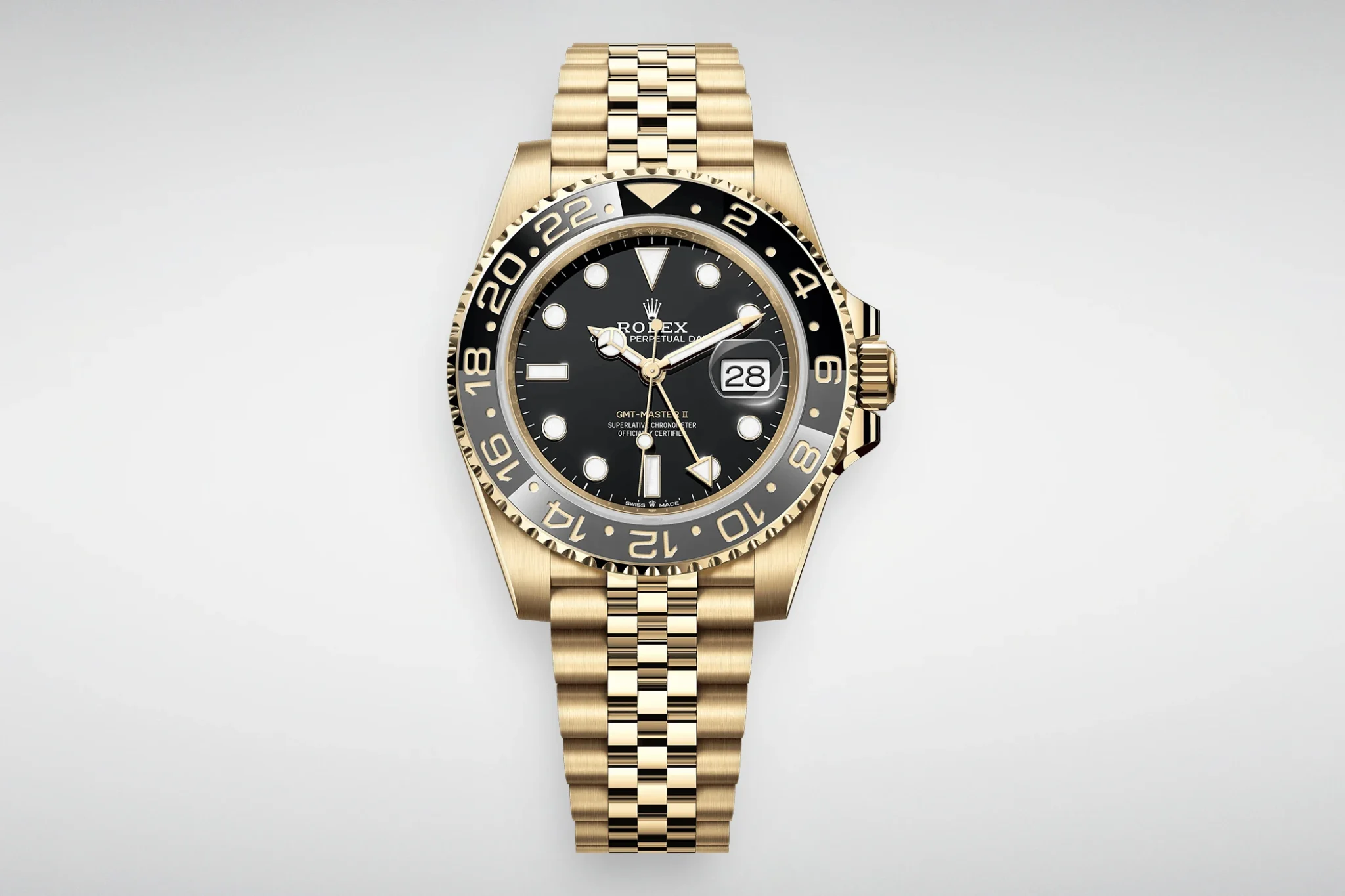
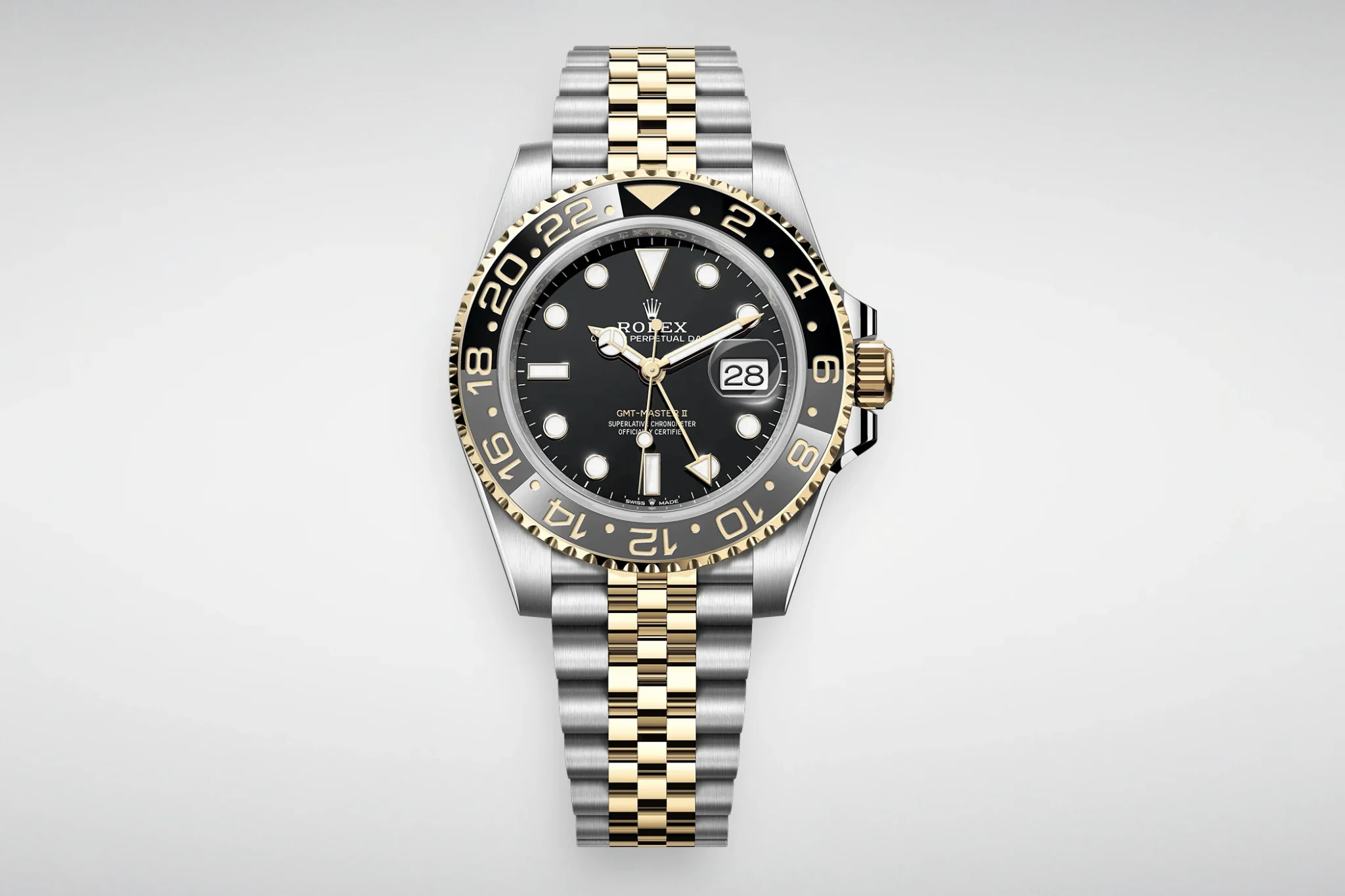
Bracelet Options
Among the currently available GMT-Master II models, two bracelet options are offered: the sporty and robust Oyster bracelet with its three flat links, and the more elegant five-link Jubilee bracelet with polished centre links.
The steel variants—Refs. 126710BLRO (“Pepsi”), 126710BLNR (“Batman”), 126710GRNR (“Bruce Wayne”), and 126720VTNR (“Sprite”)—are available with either bracelet, though the choice affects retail pricing.
In contrast, the two-tone “Bruce Wayne” in Rolesor (Ref. 126713GRNR) and its solid yellow gold counterpart (Ref. 126718GRNR) are exclusively offered on Jubilee bracelets. The “Root Beer” models—Refs. 126711CHNR in Rolesor and 126715CHNR in Everose gold—come only with Oyster bracelets. Similarly, the exclusive white gold models—Refs. 126719BLRO (“Pepsi”) and 126729VTNR (“Sprite”)—are also delivered solely with Oyster bracelets.
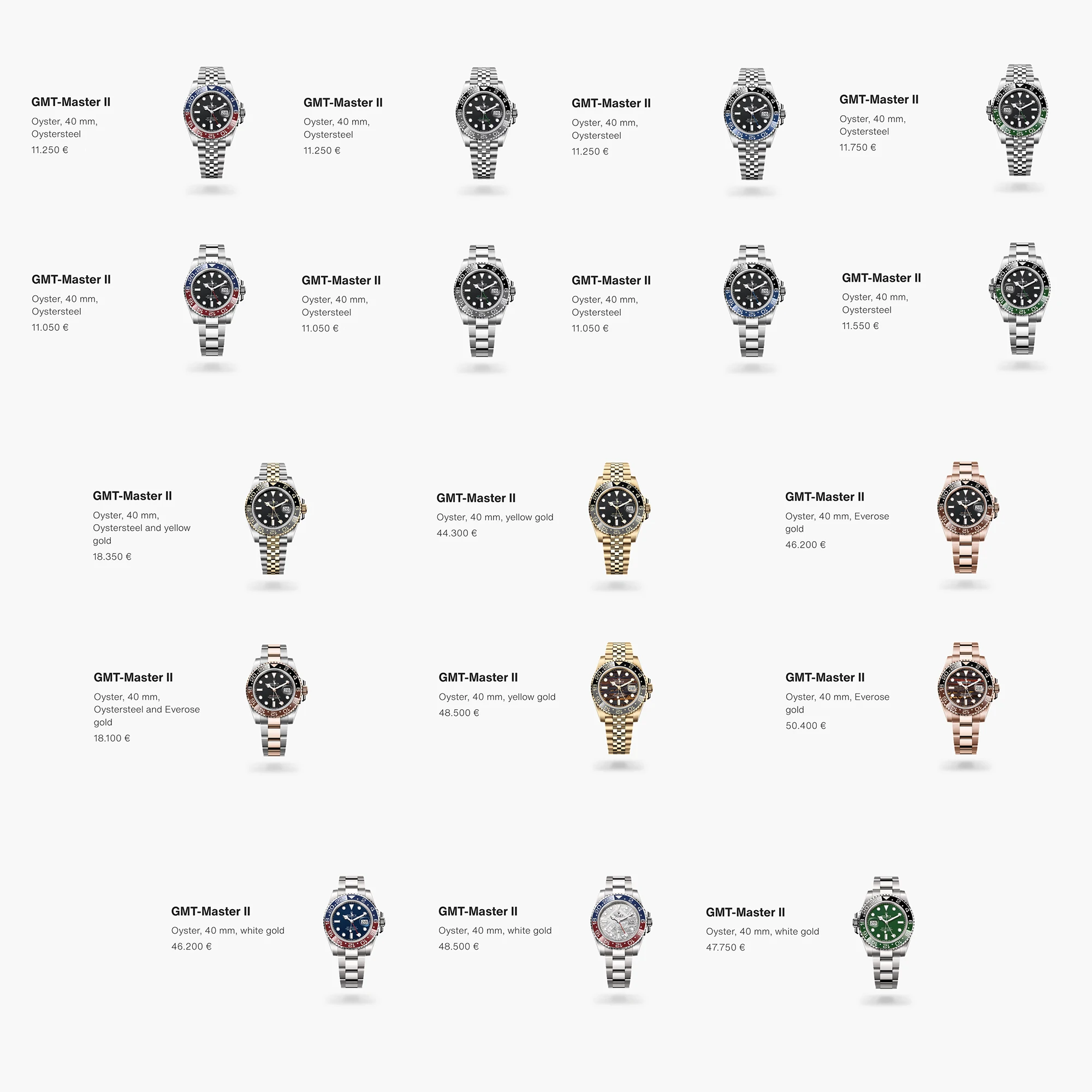
The Most Expensive GMT-Master Ever Sold
Finally, it’s worth highlighting the most expensive GMT-Master ever auctioned: the very watch worn by Marlon Brando in Apocalypse Now (1979). What makes this Ref. 1675 so unique is its backstory: Brando personally removed the bezel, claiming it looked too flashy for his role, and engraved “M. Brando” on the caseback.
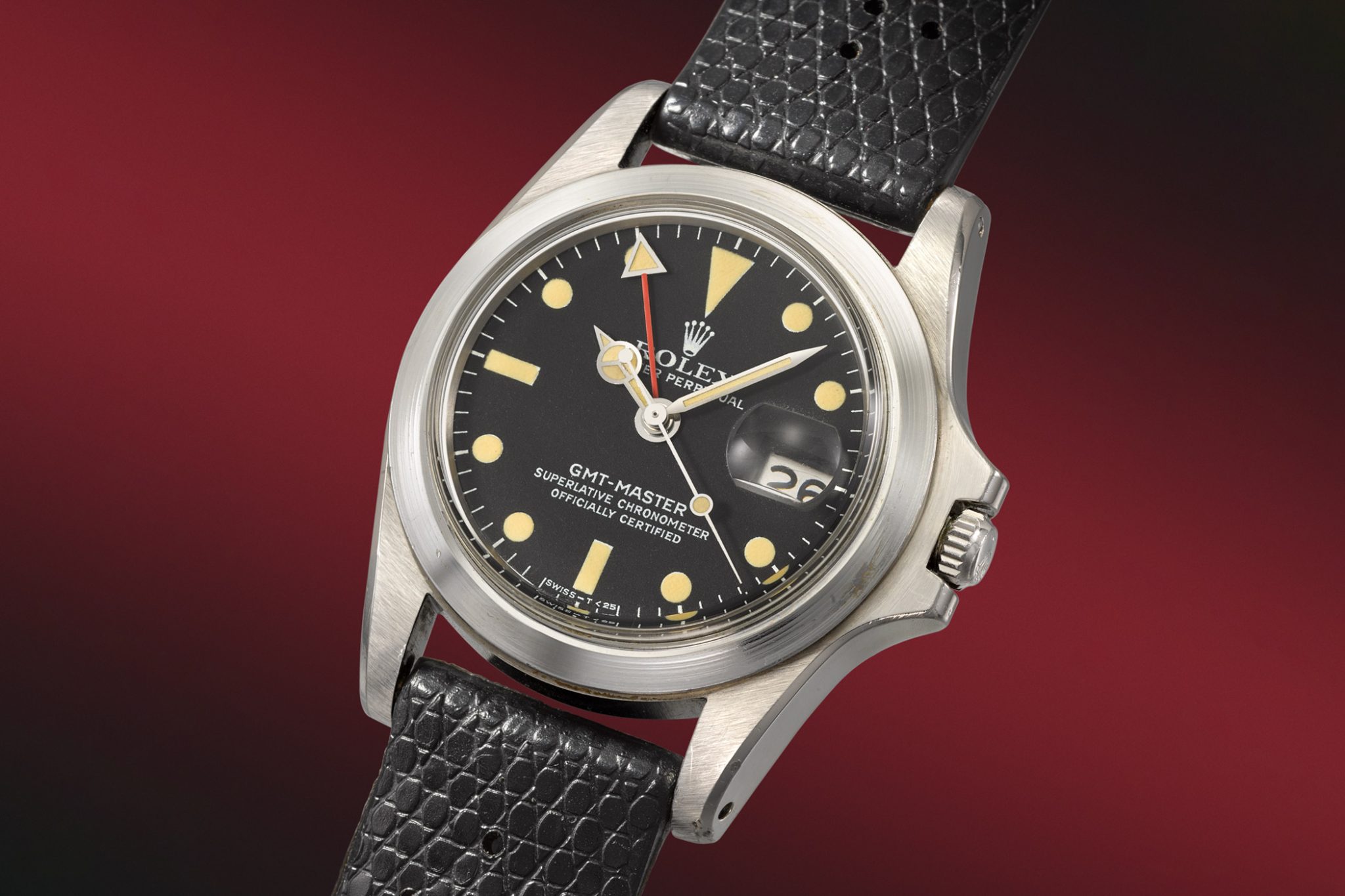
These personal modifications and the watch’s cinematic provenance made it a collector’s grail. It was first sold at auction in 2019 for approximately 1.8 million Swiss francs and reached a record sum of CHF 4,582,500 at Christie’s Passion for Time auction in 2023.
